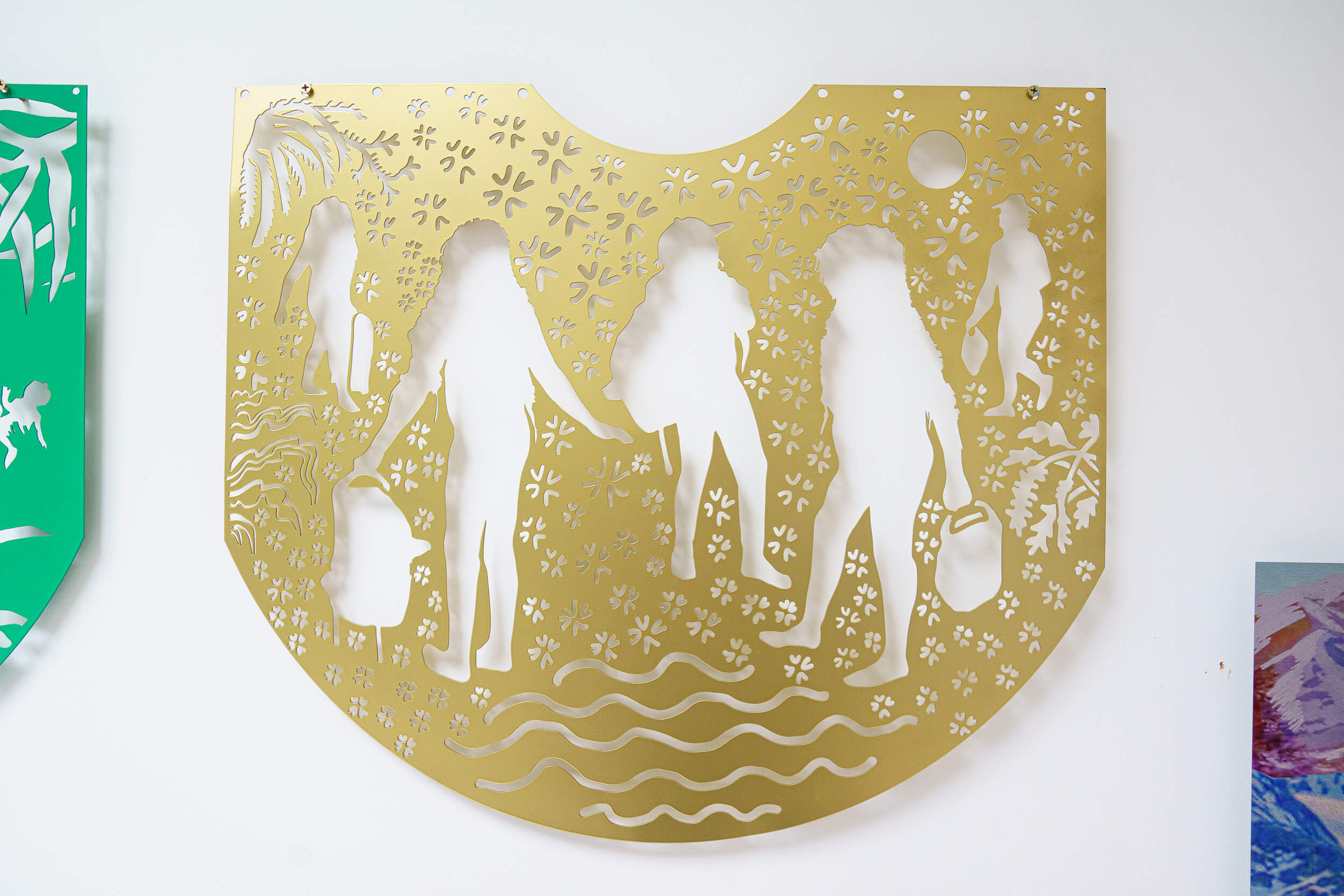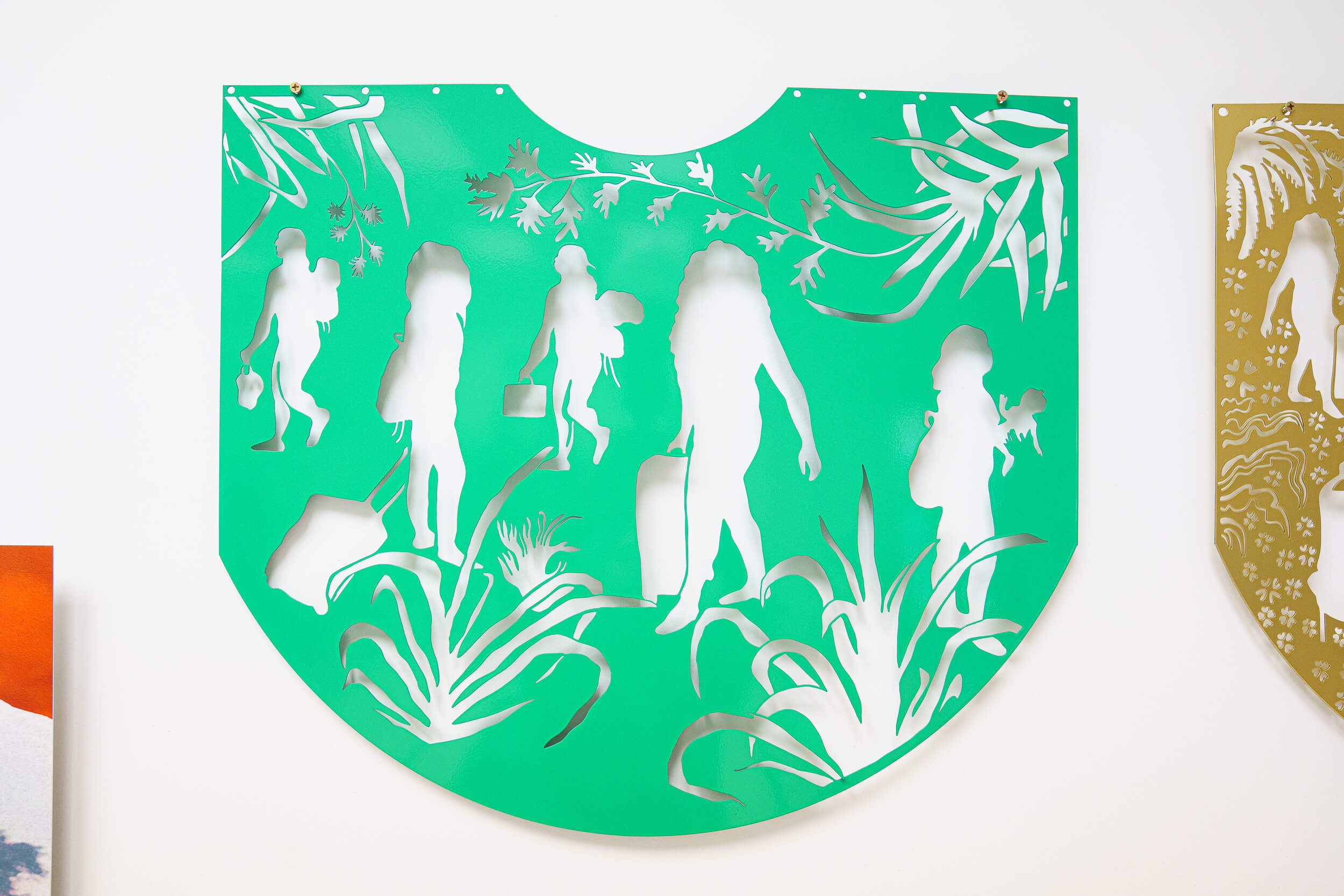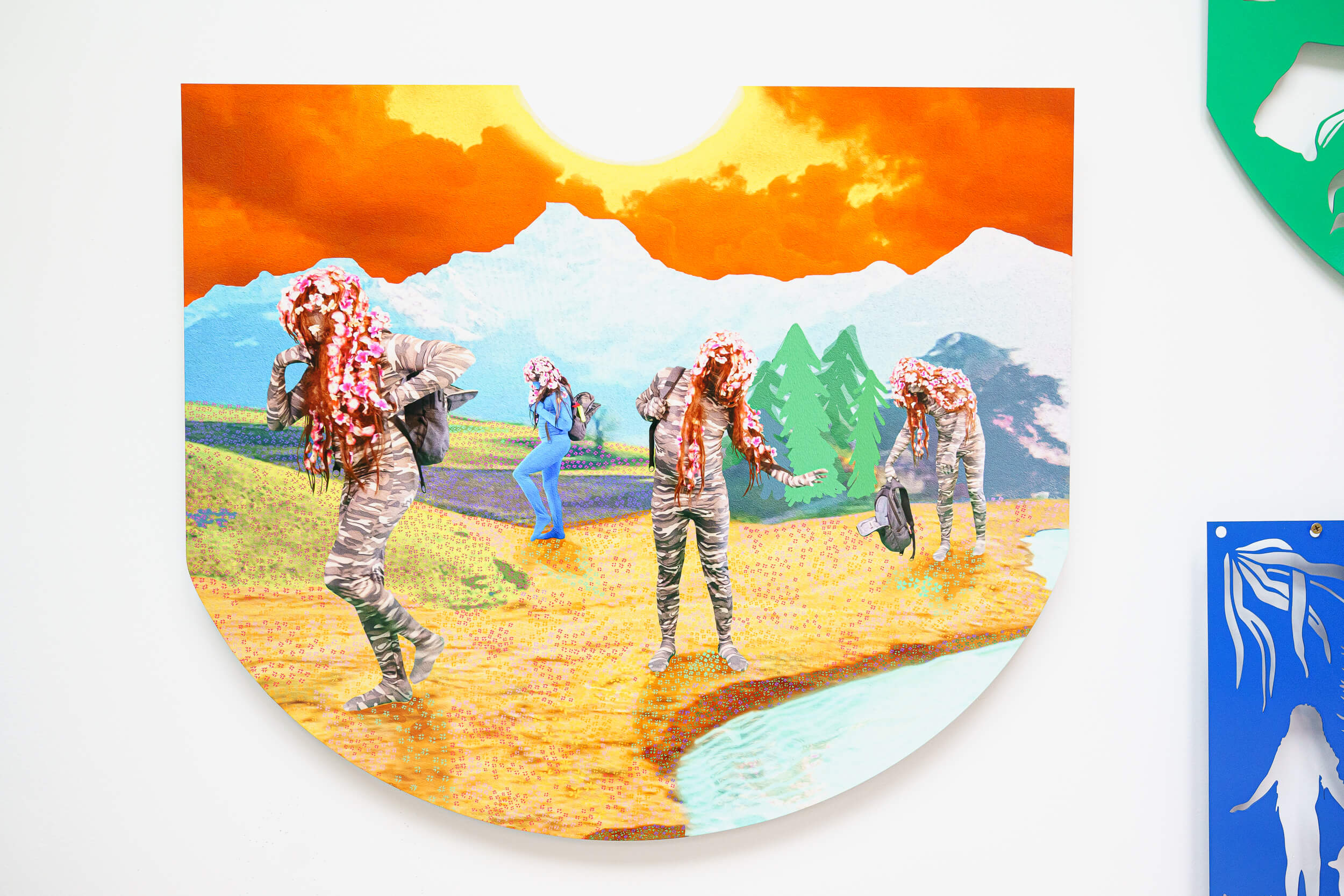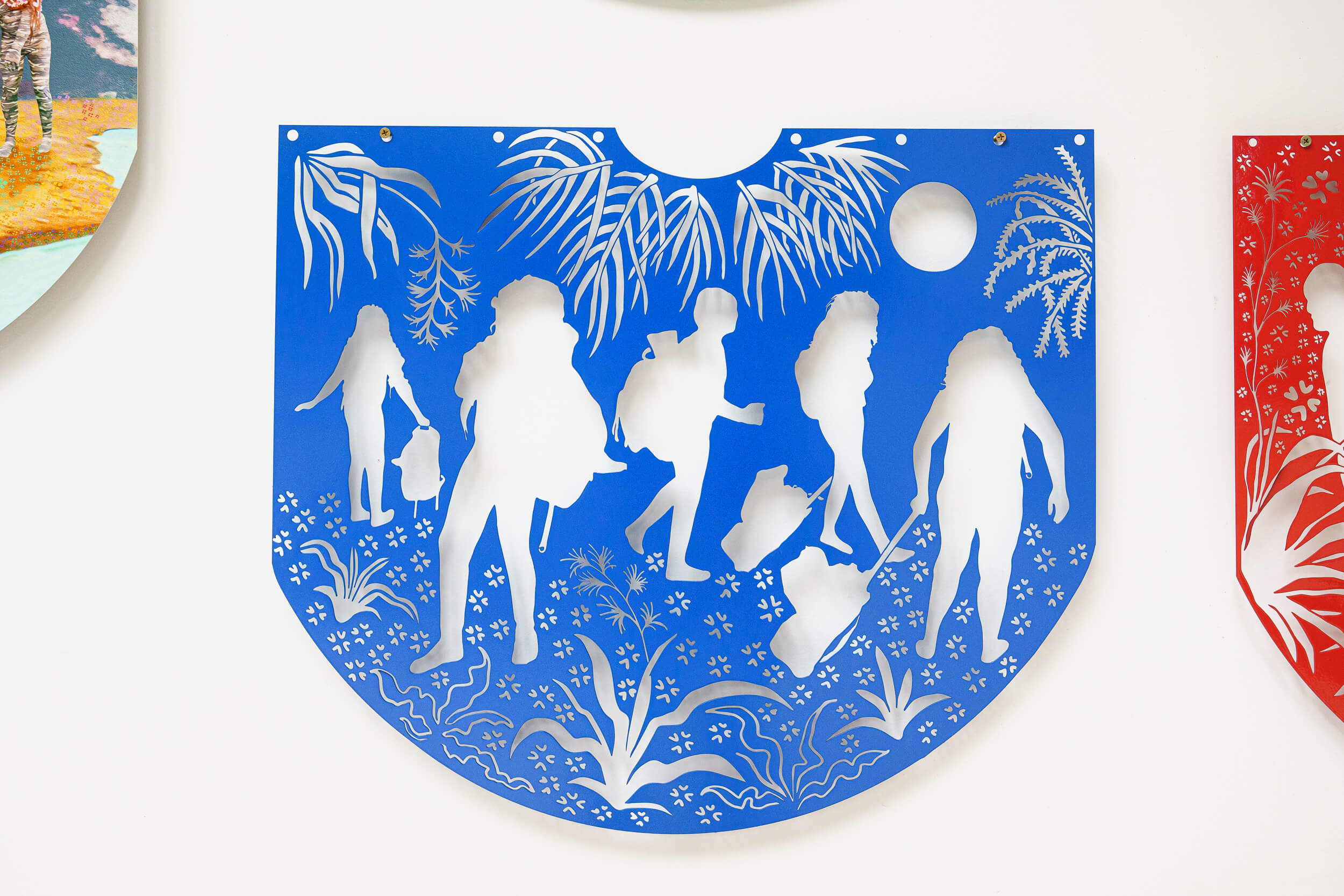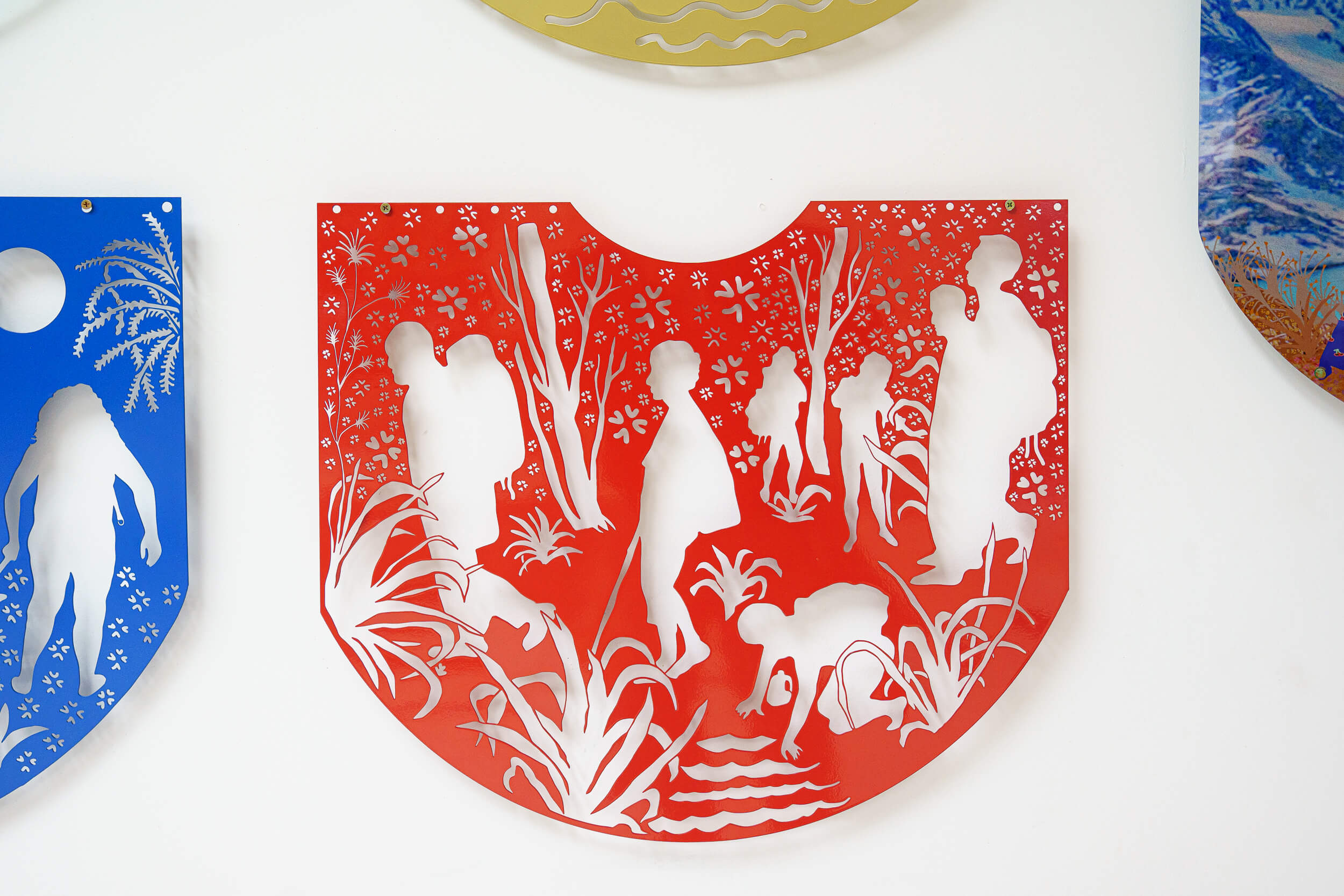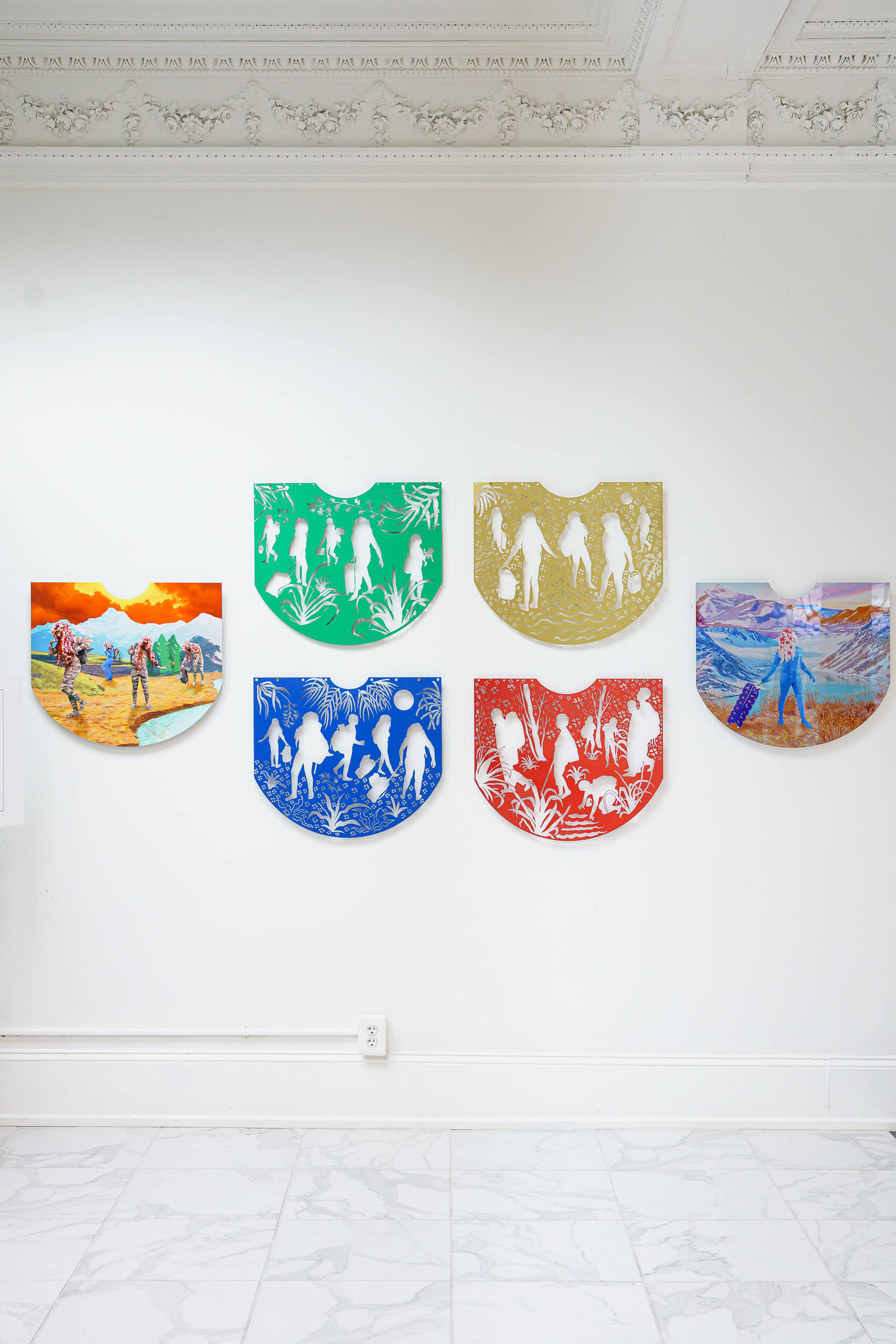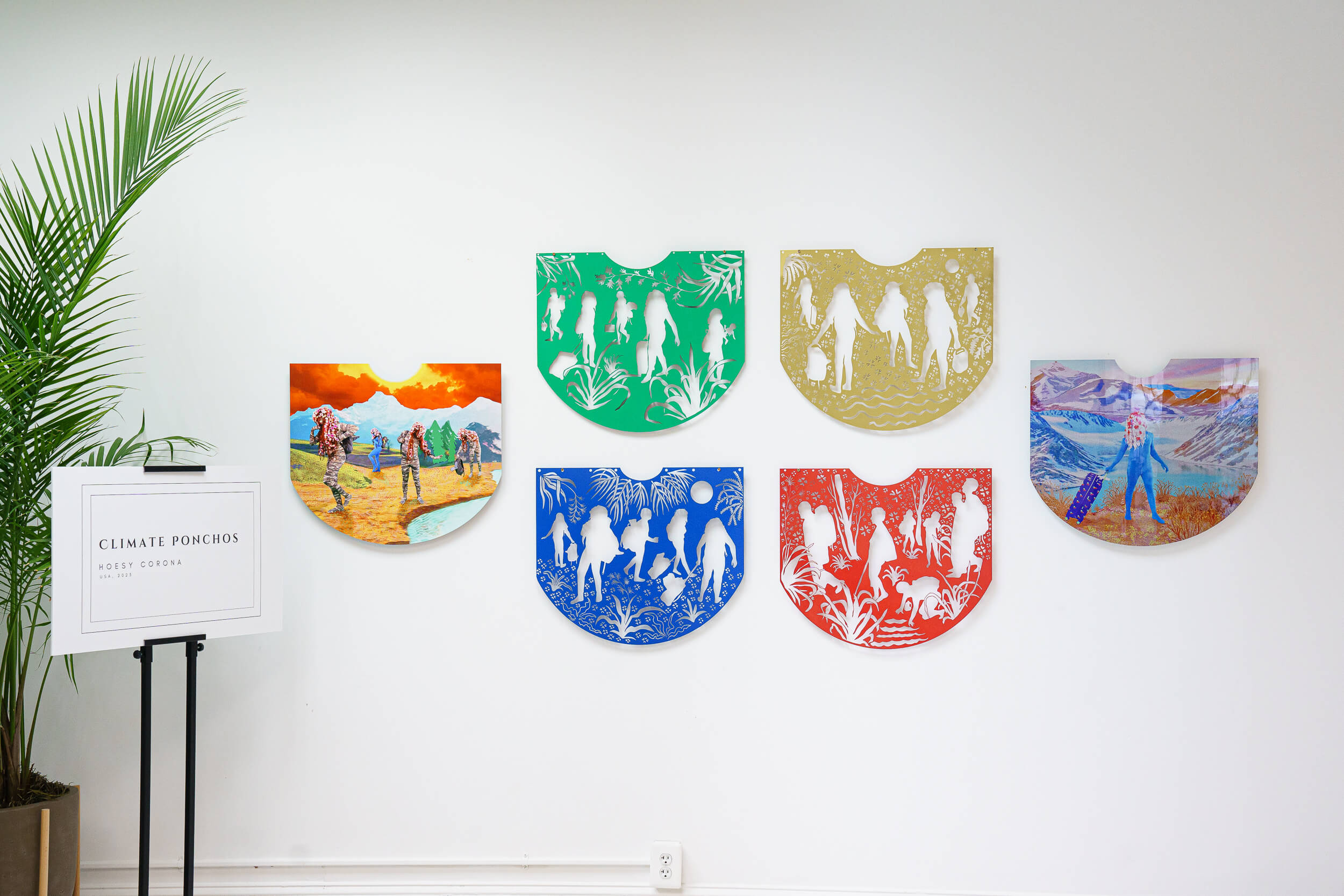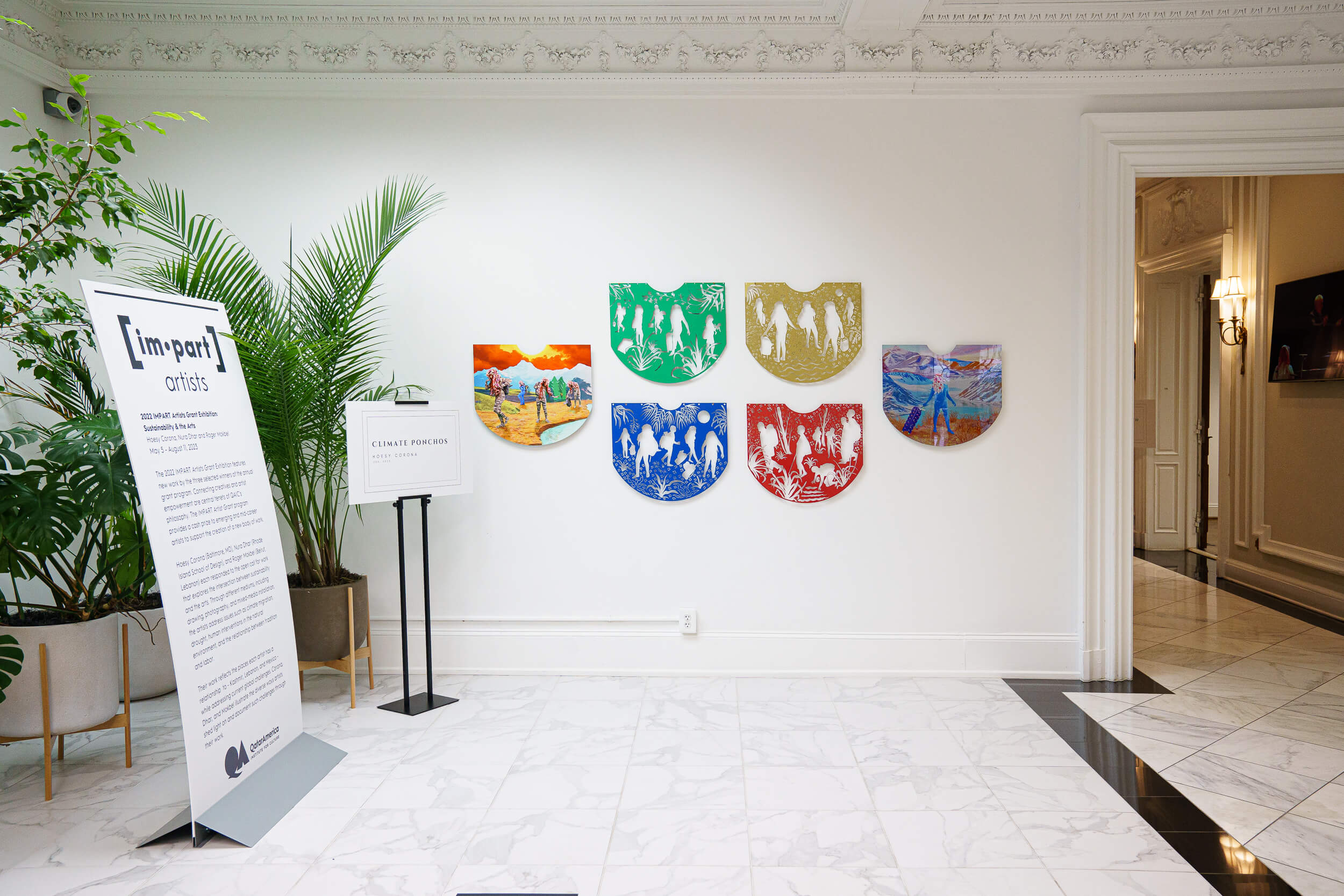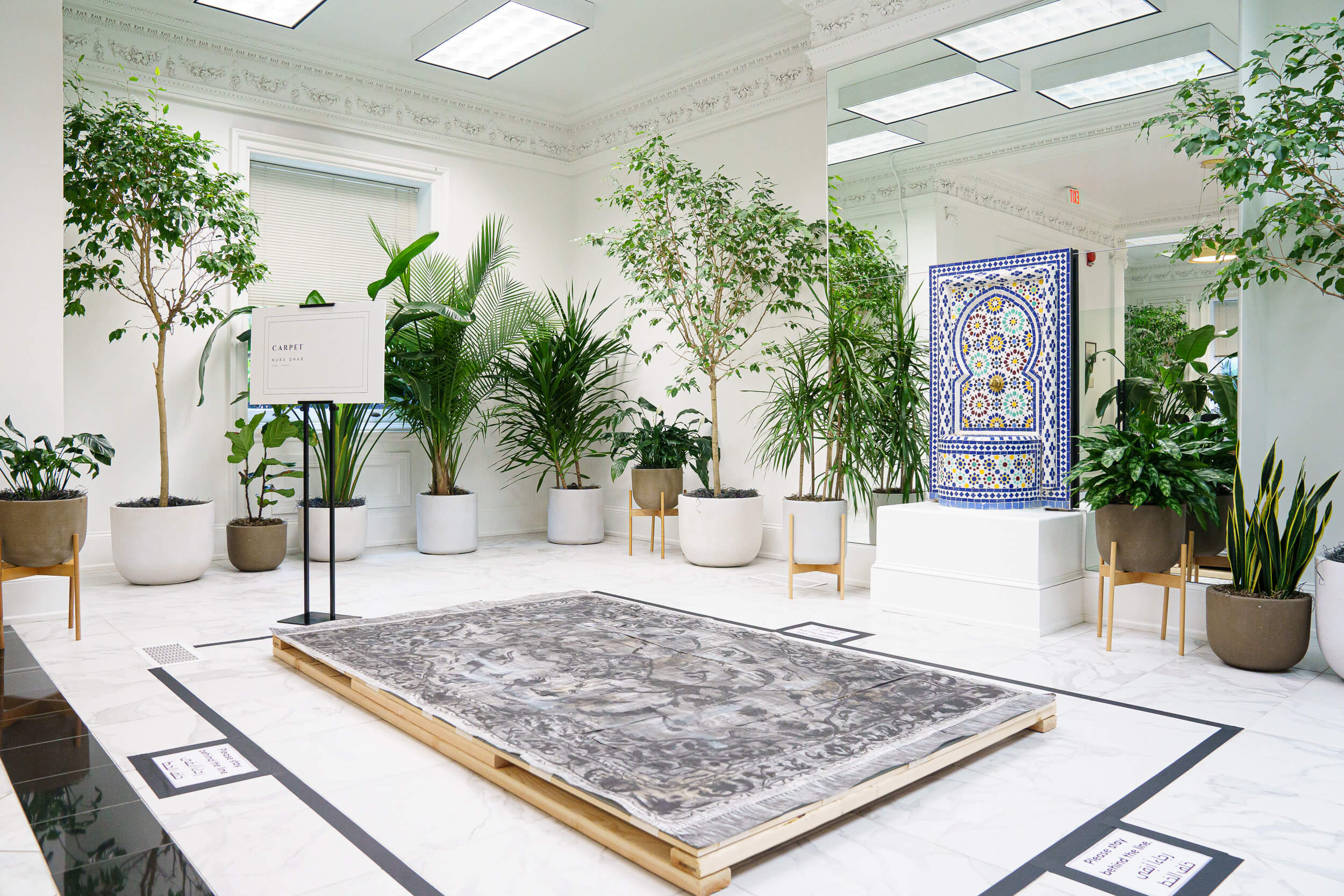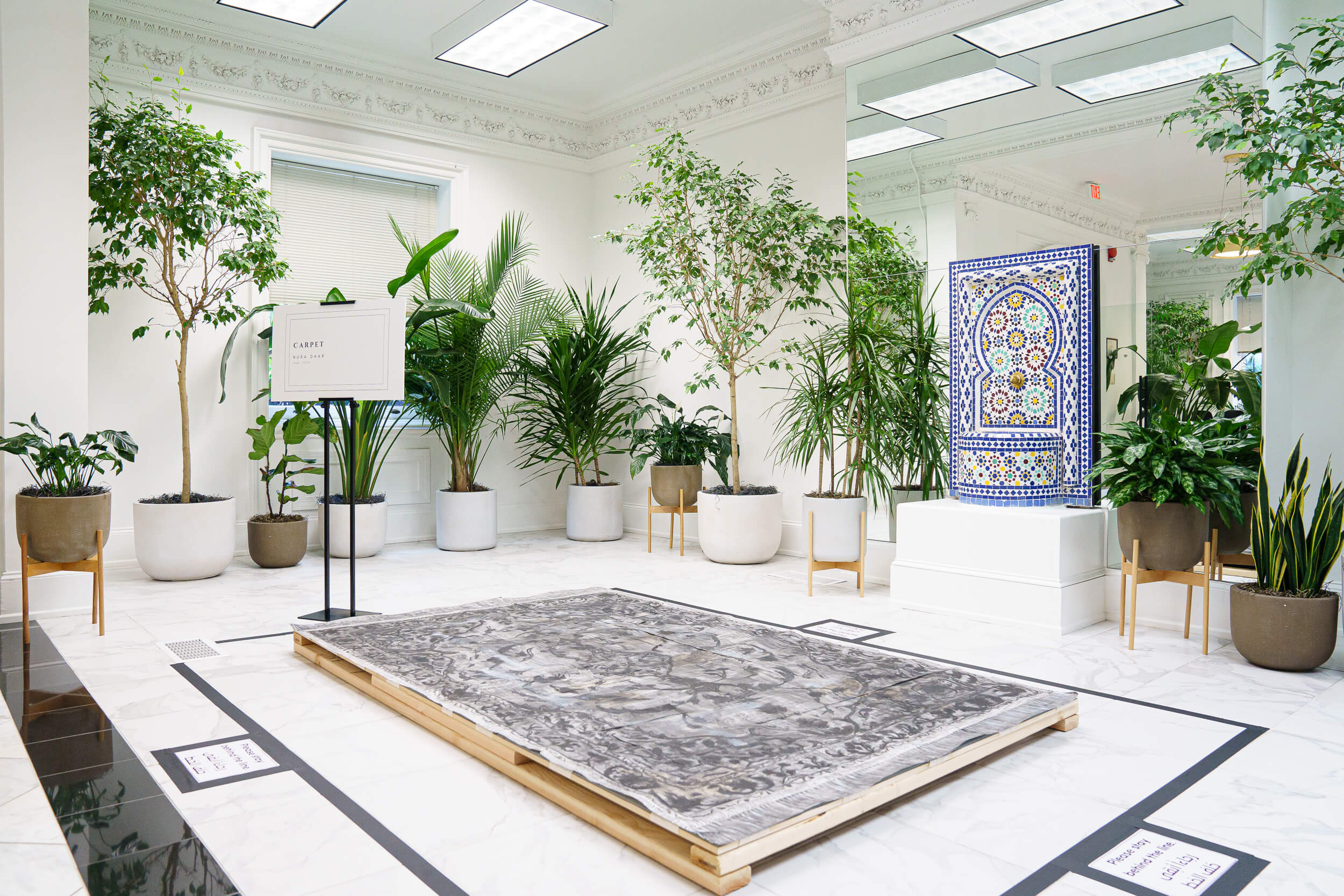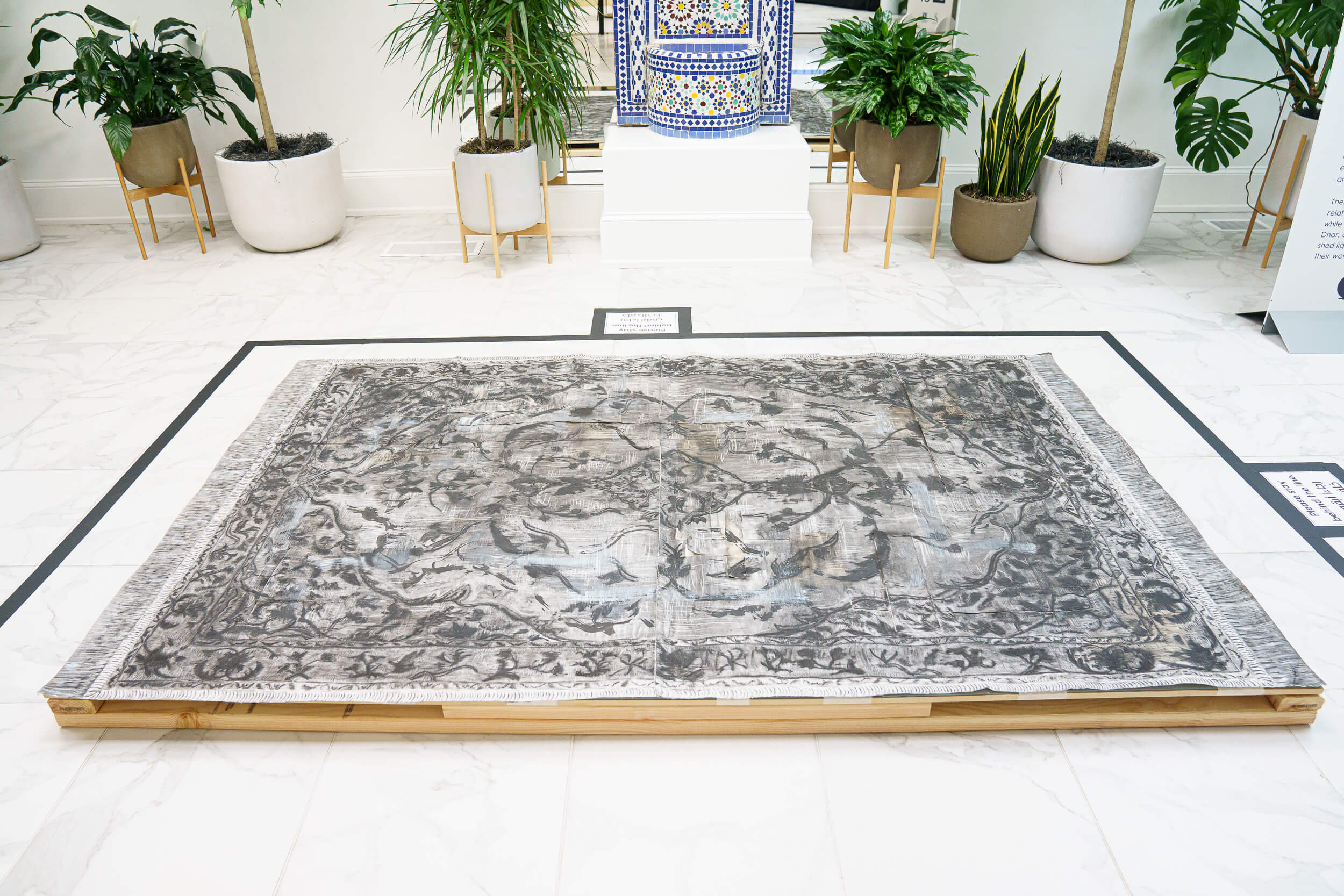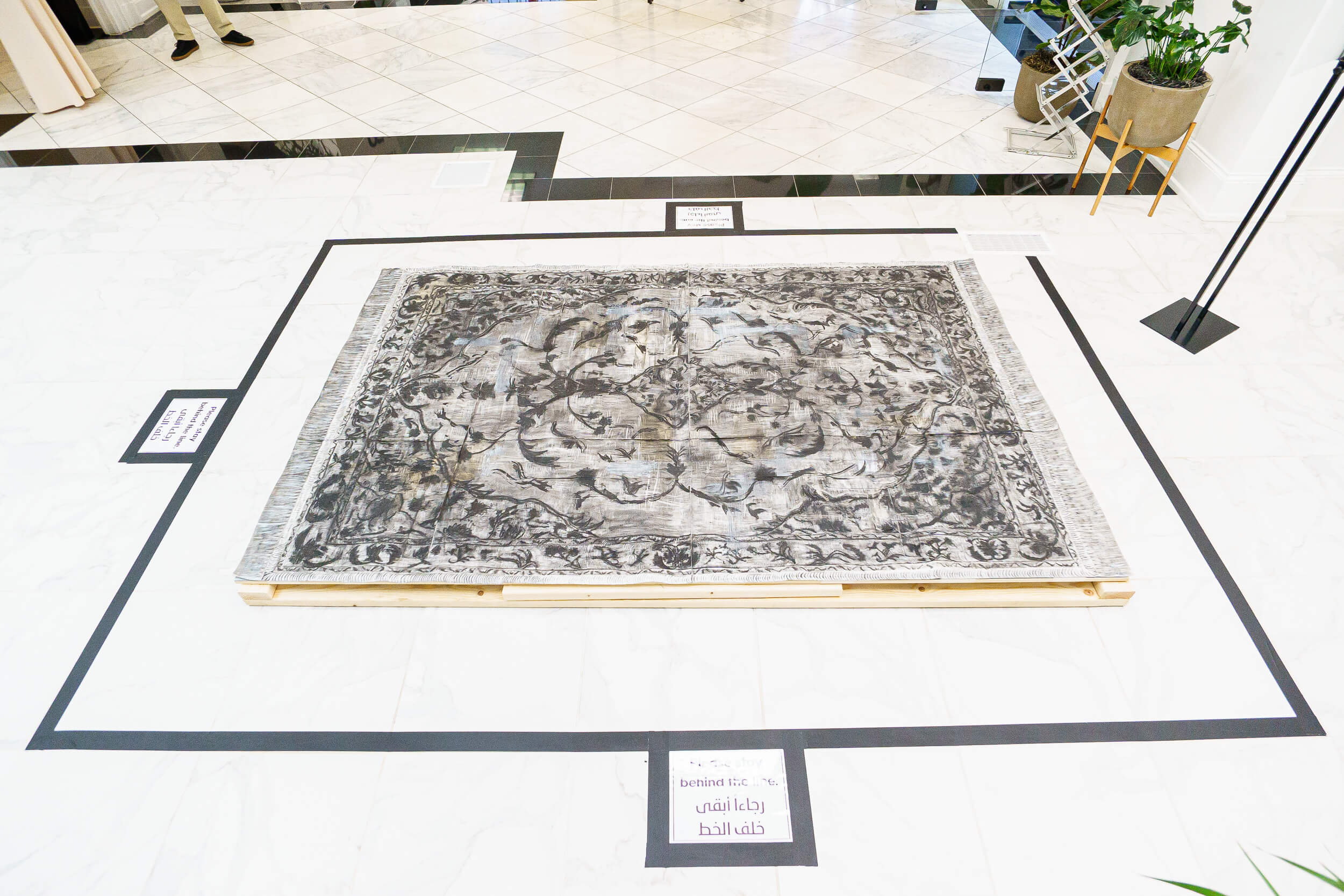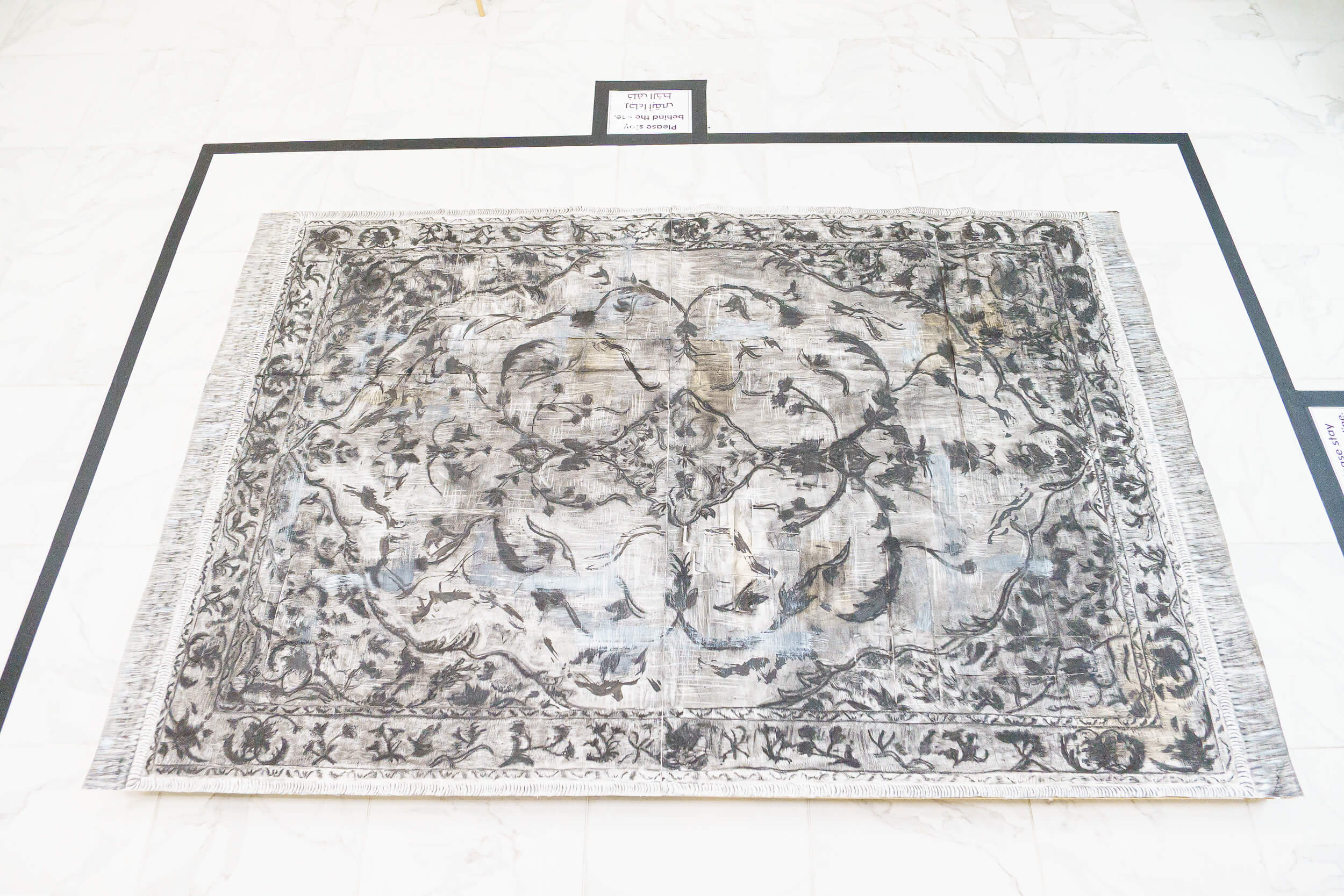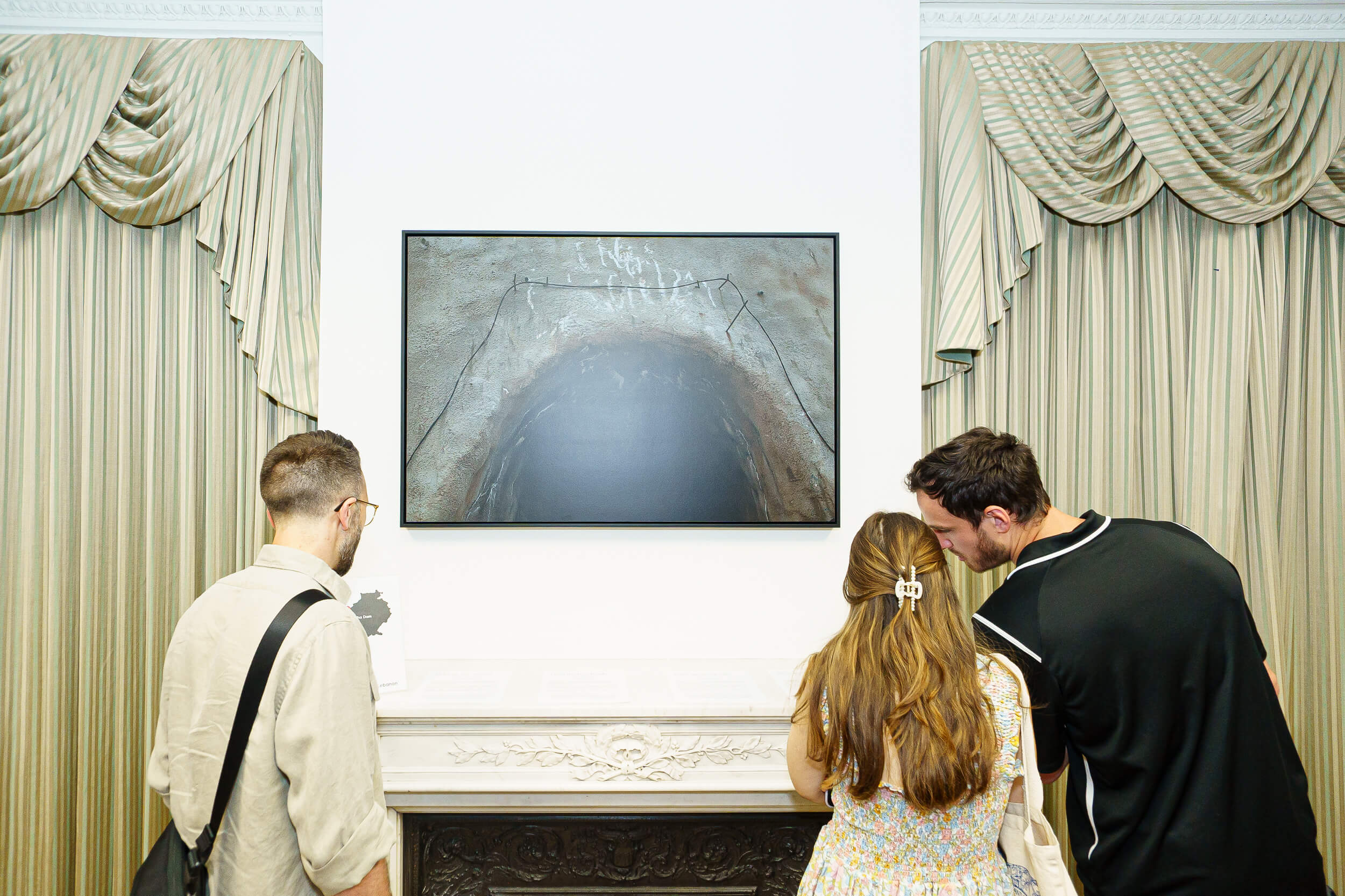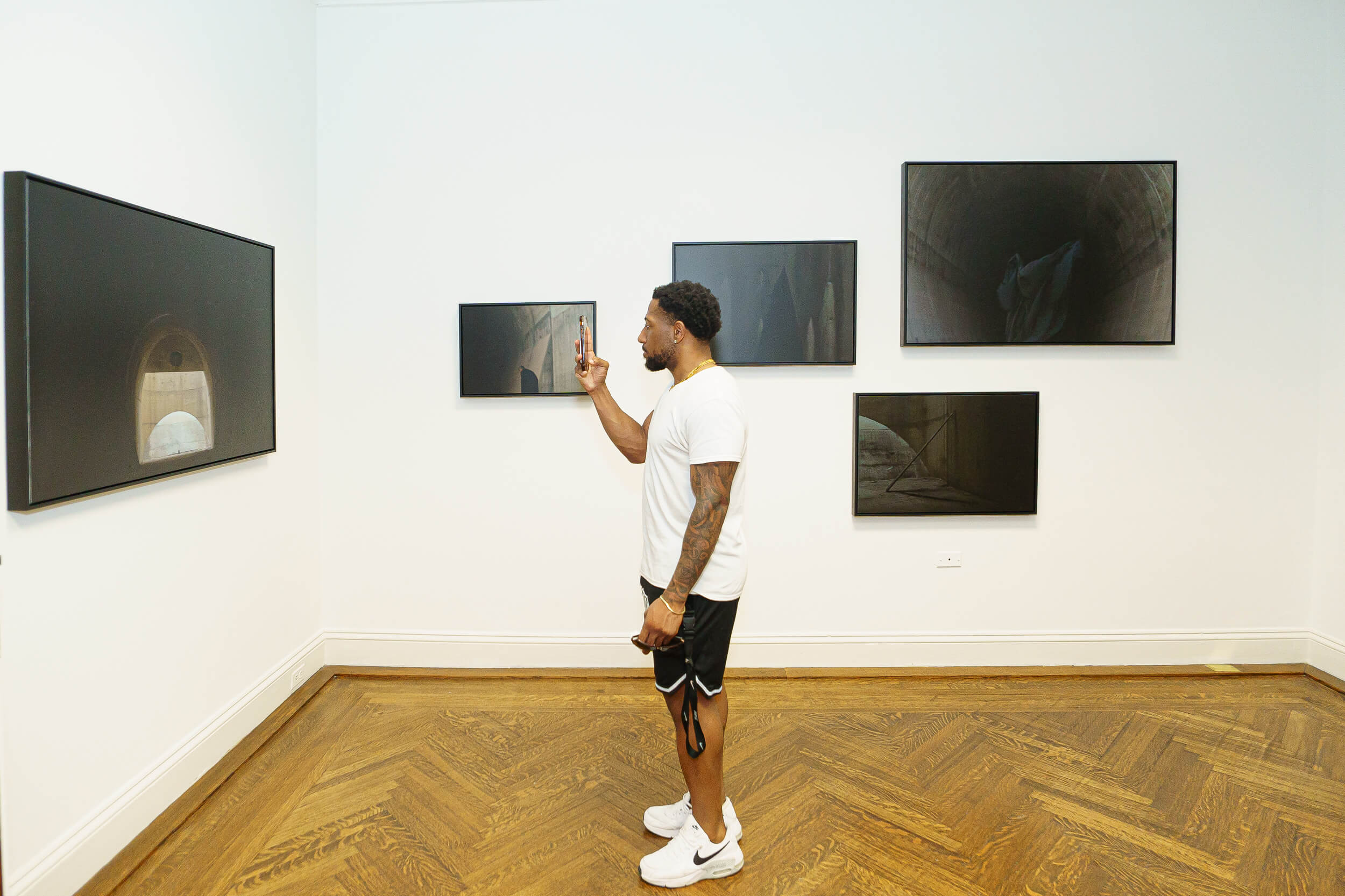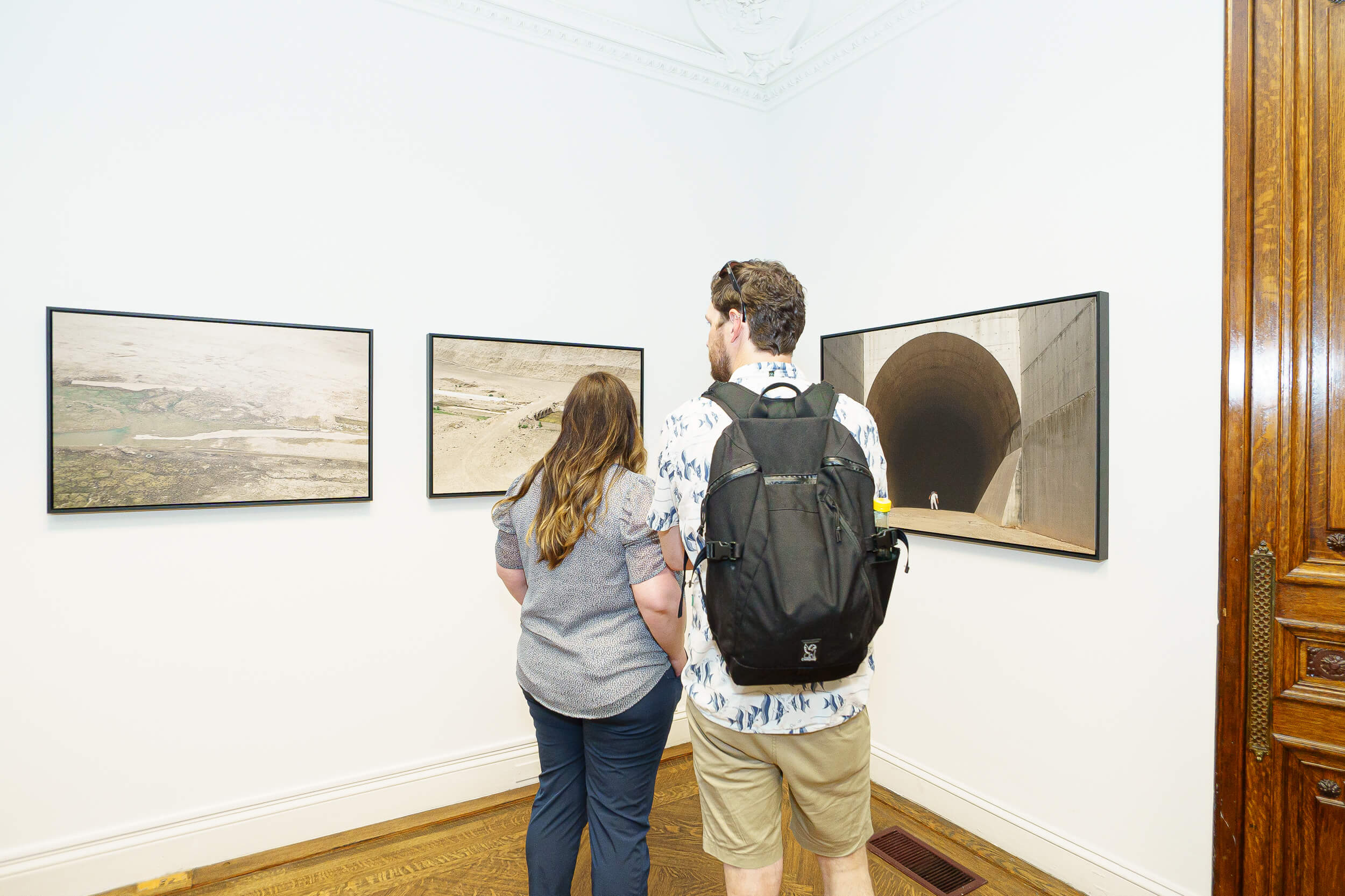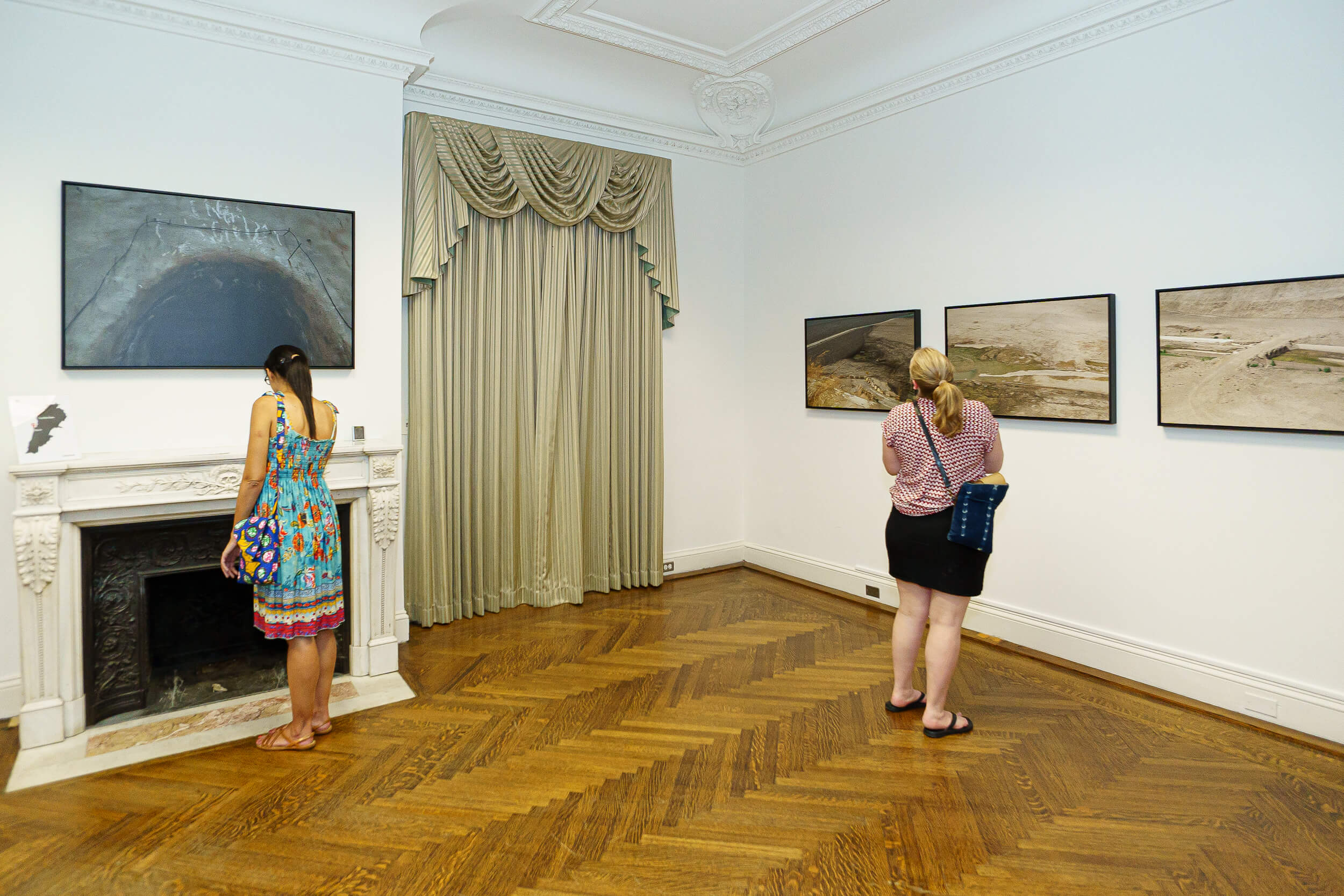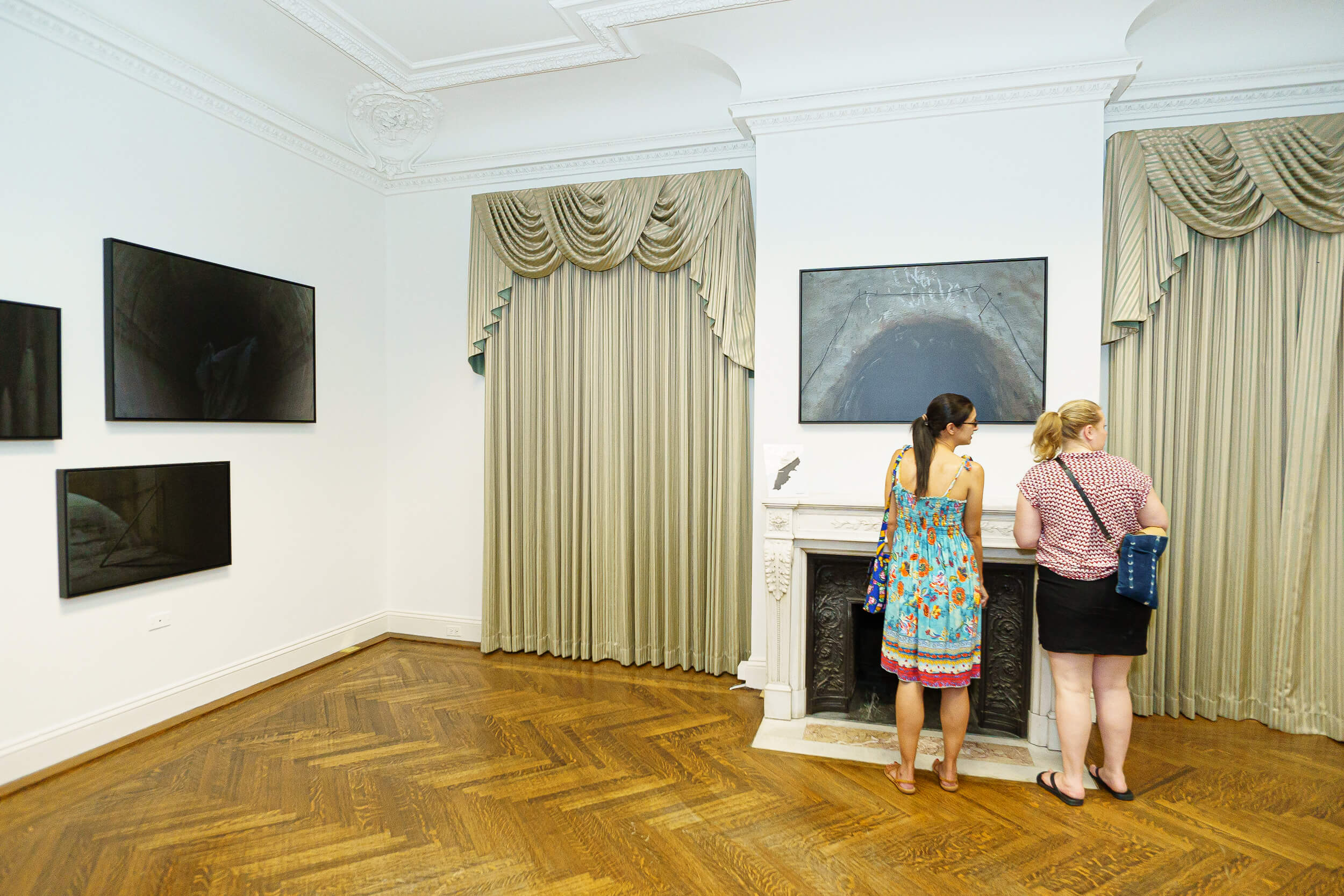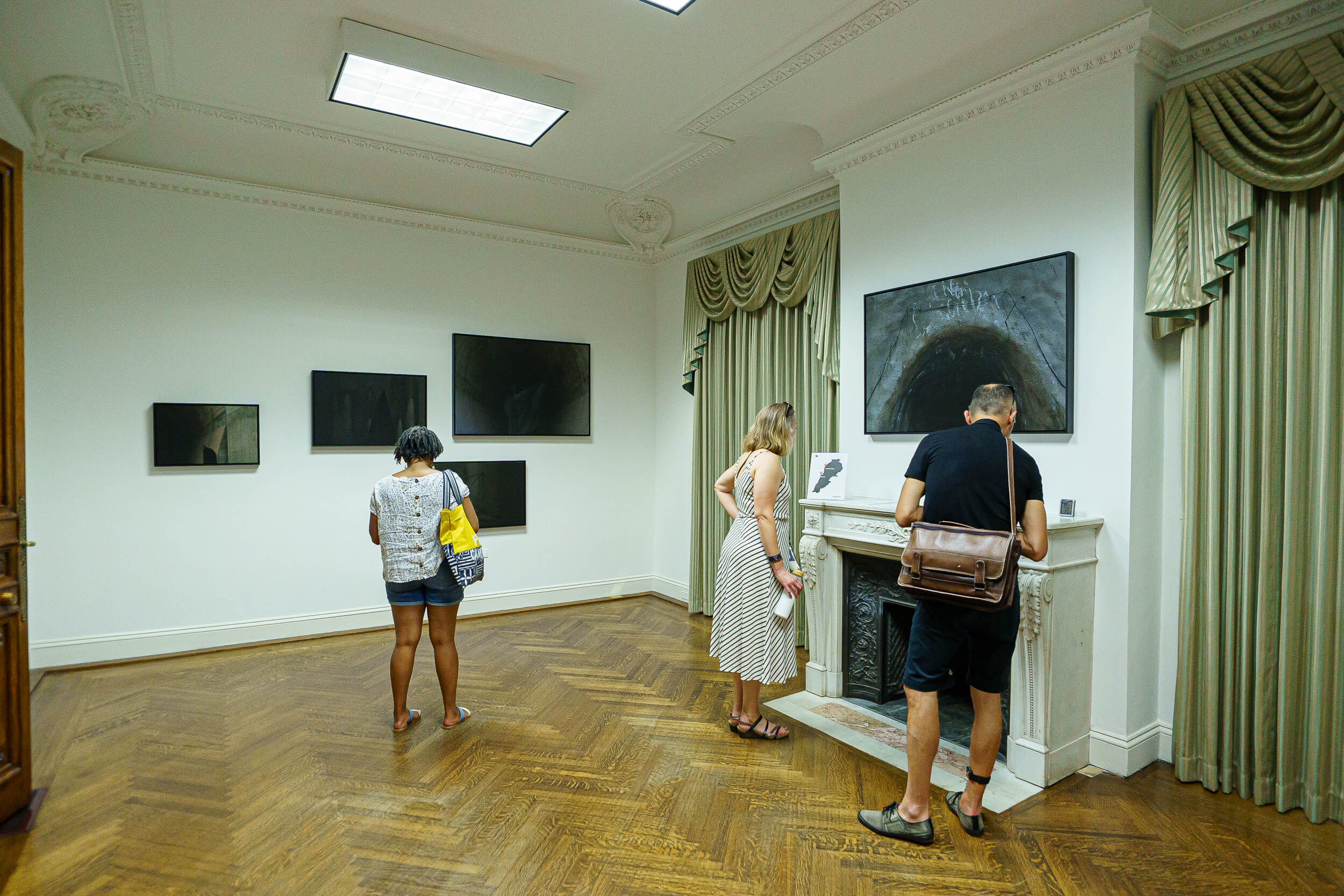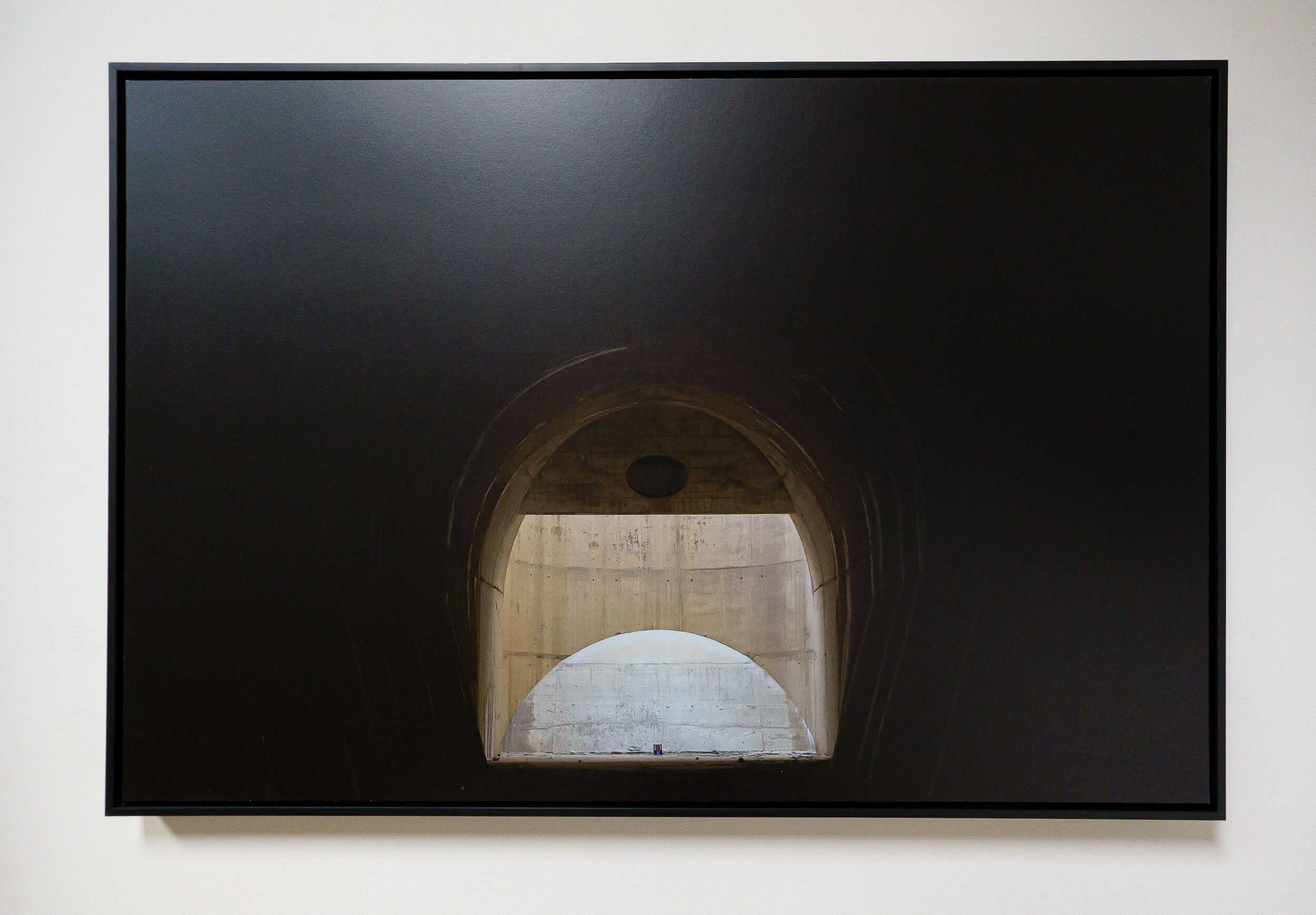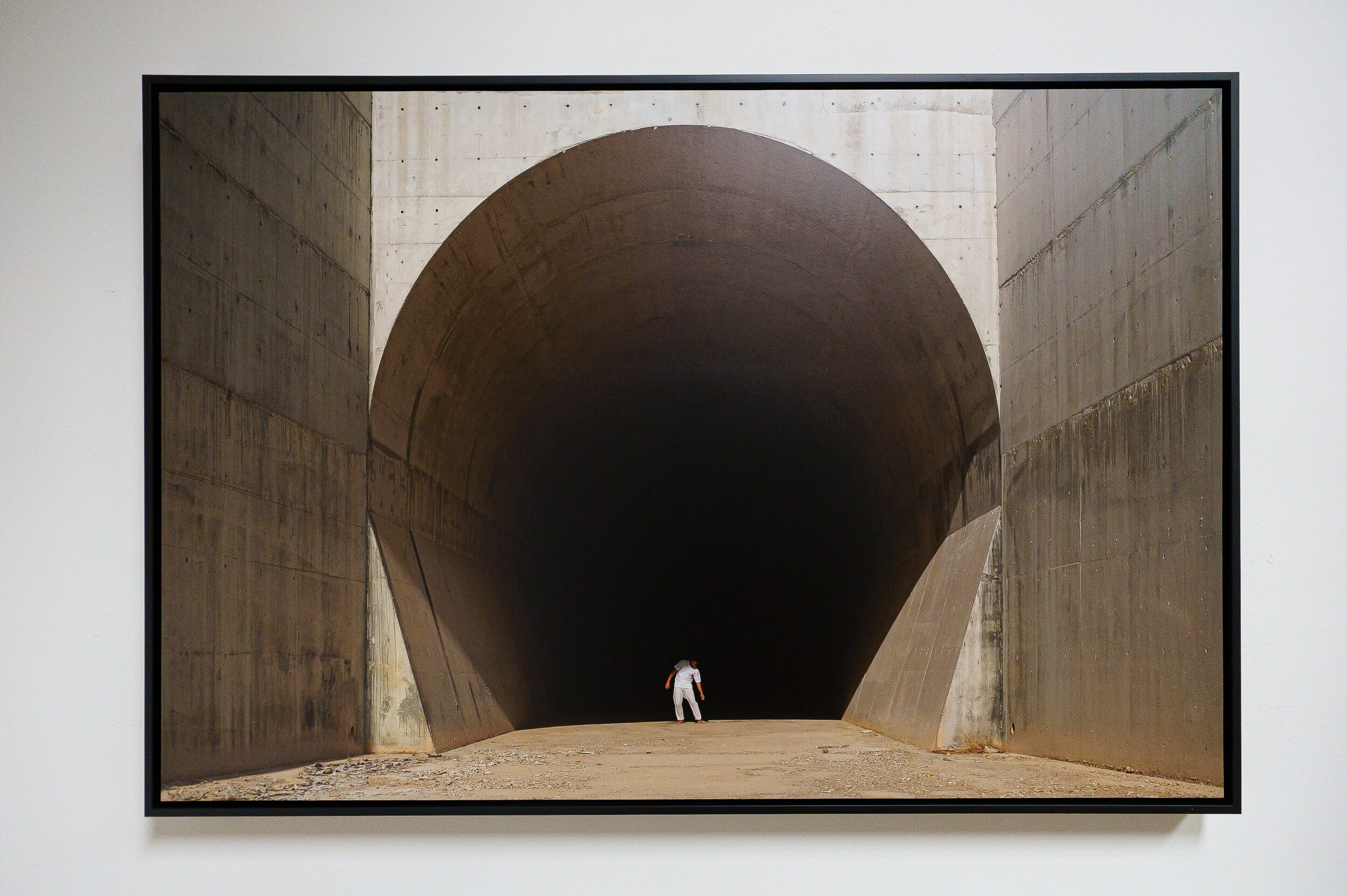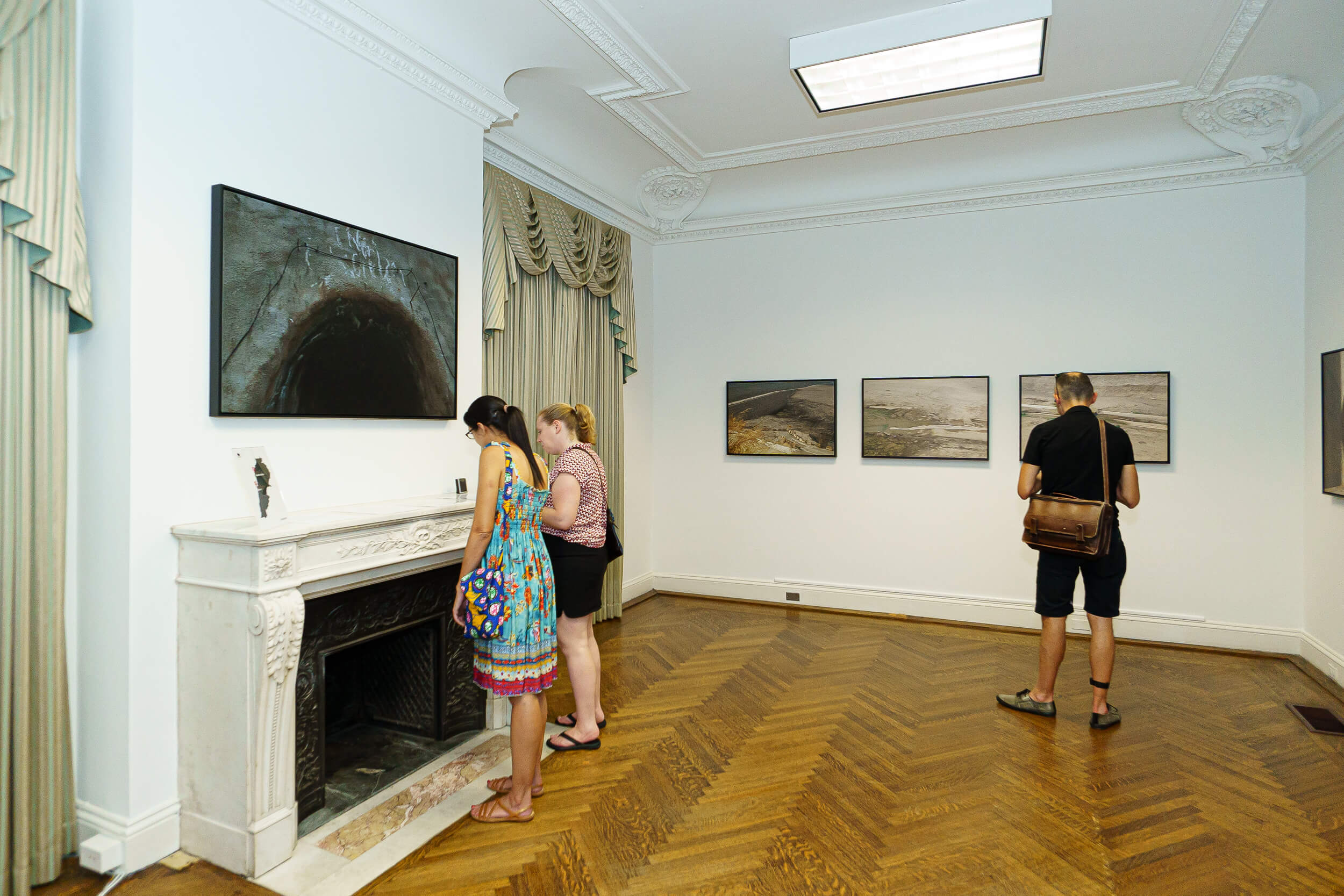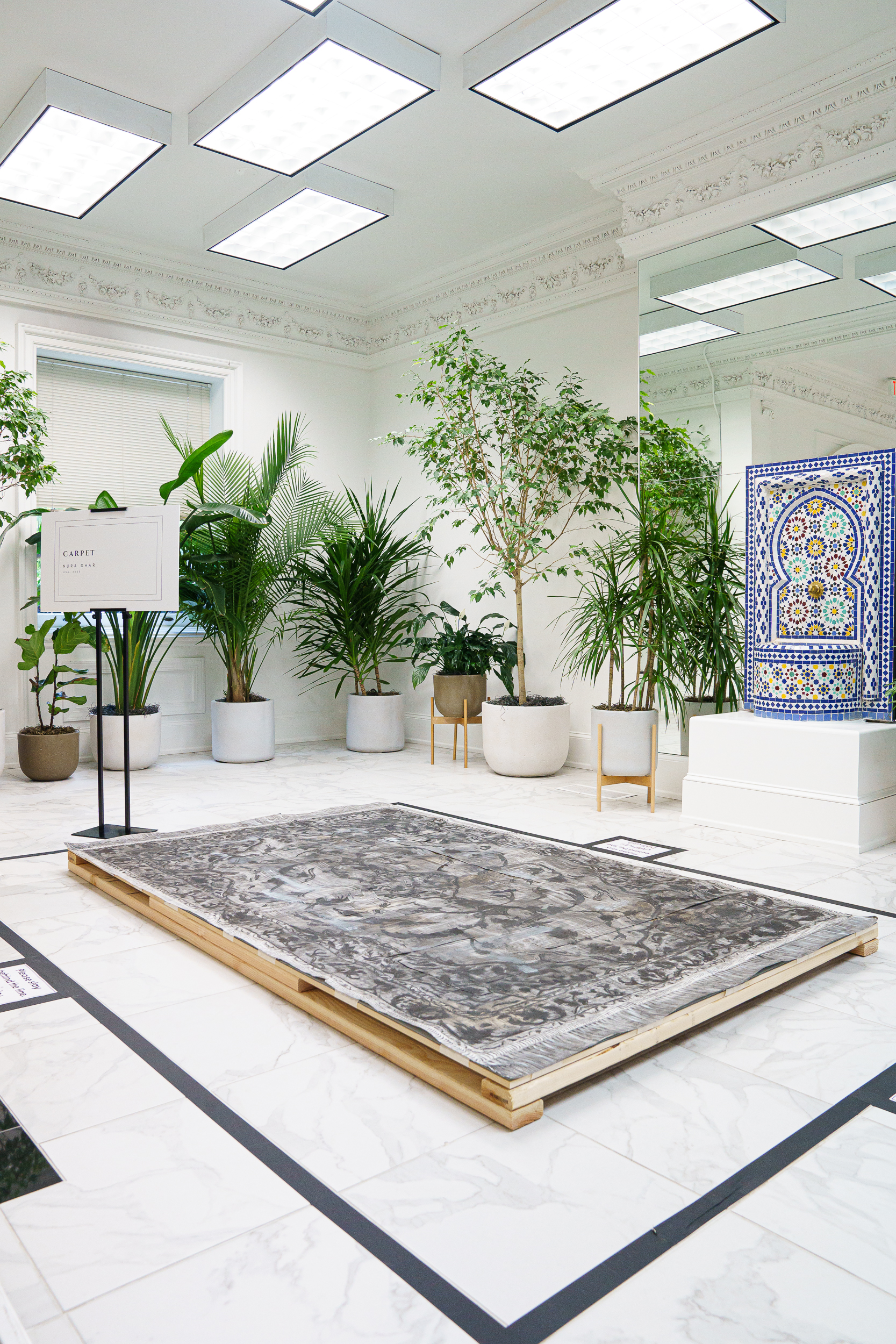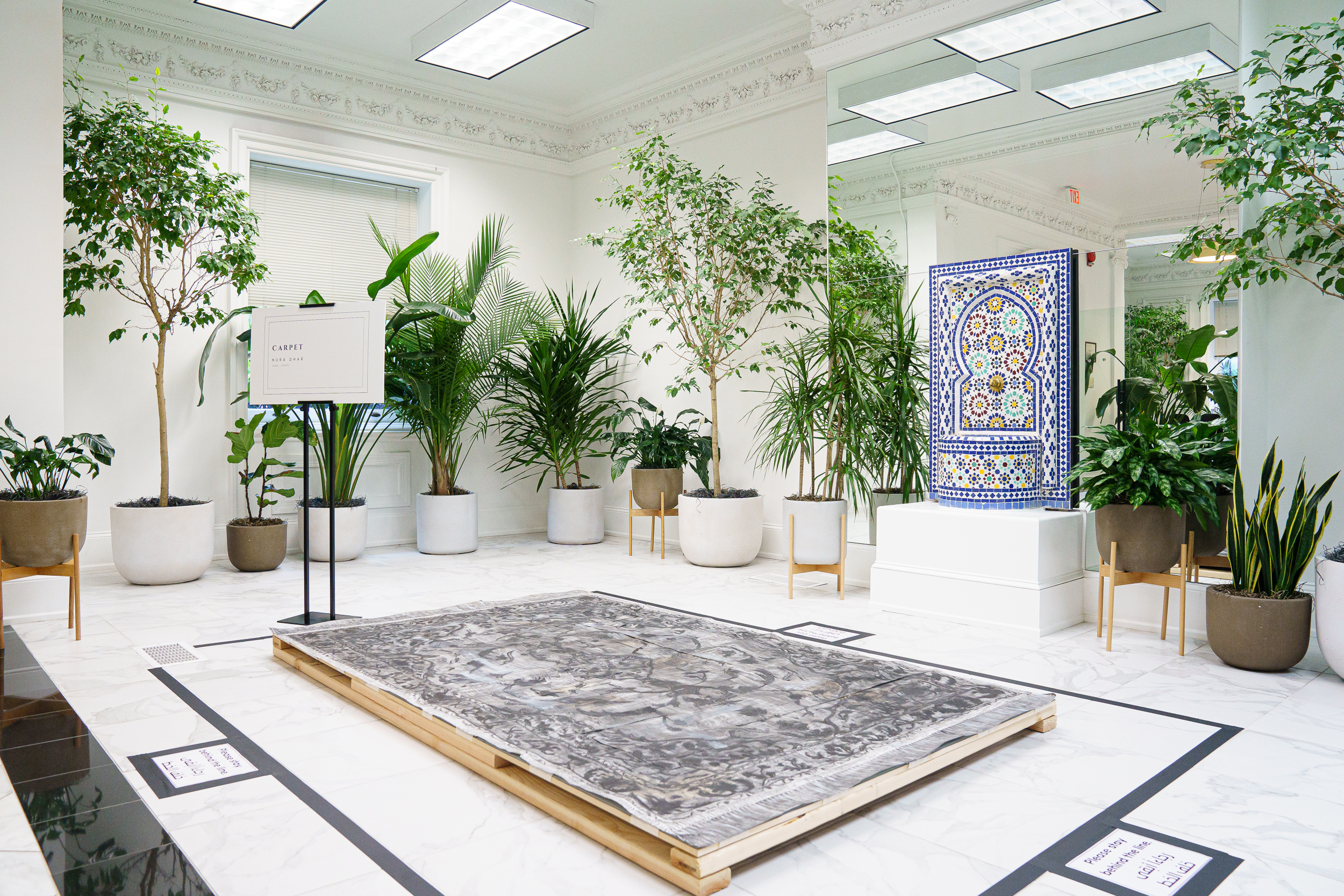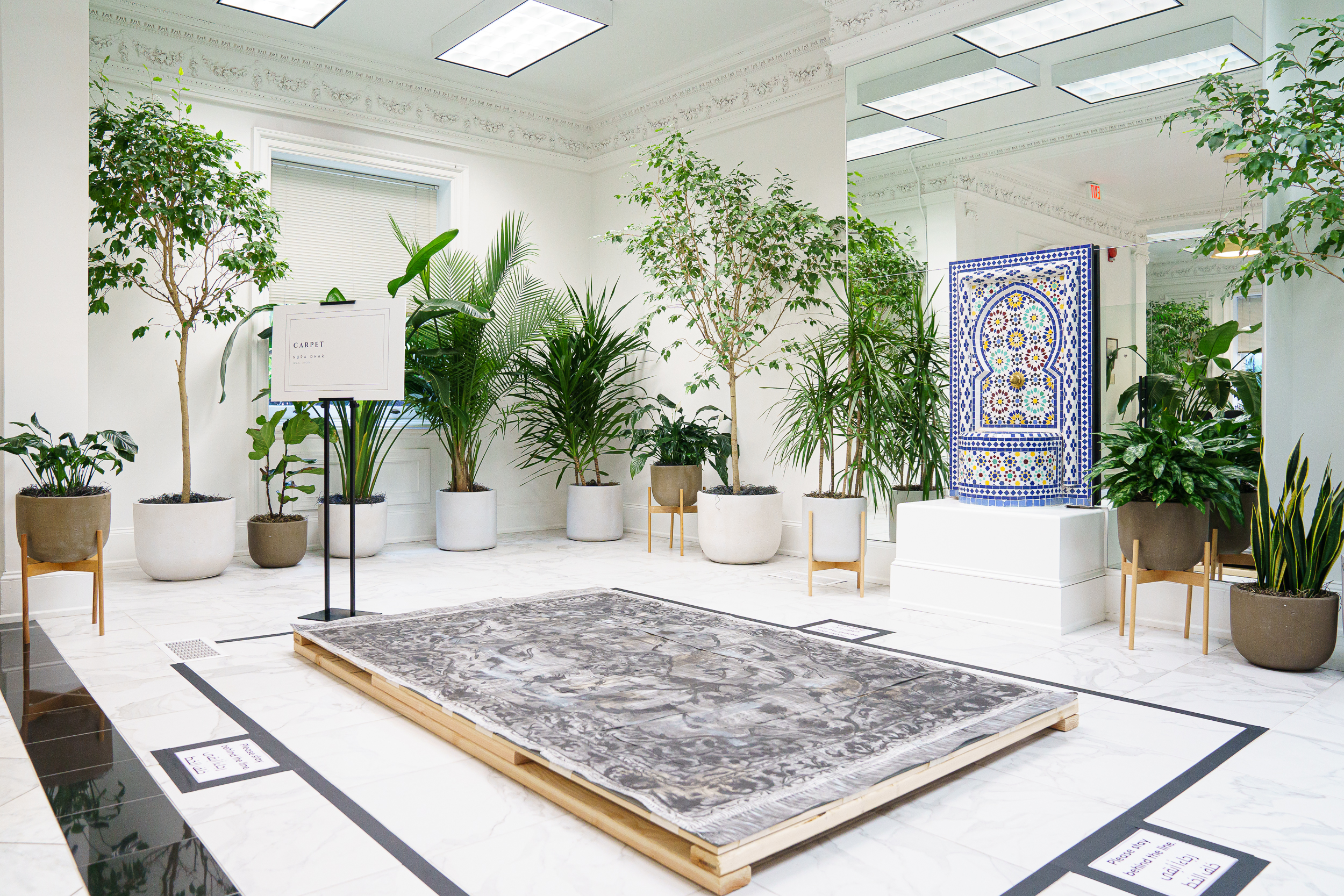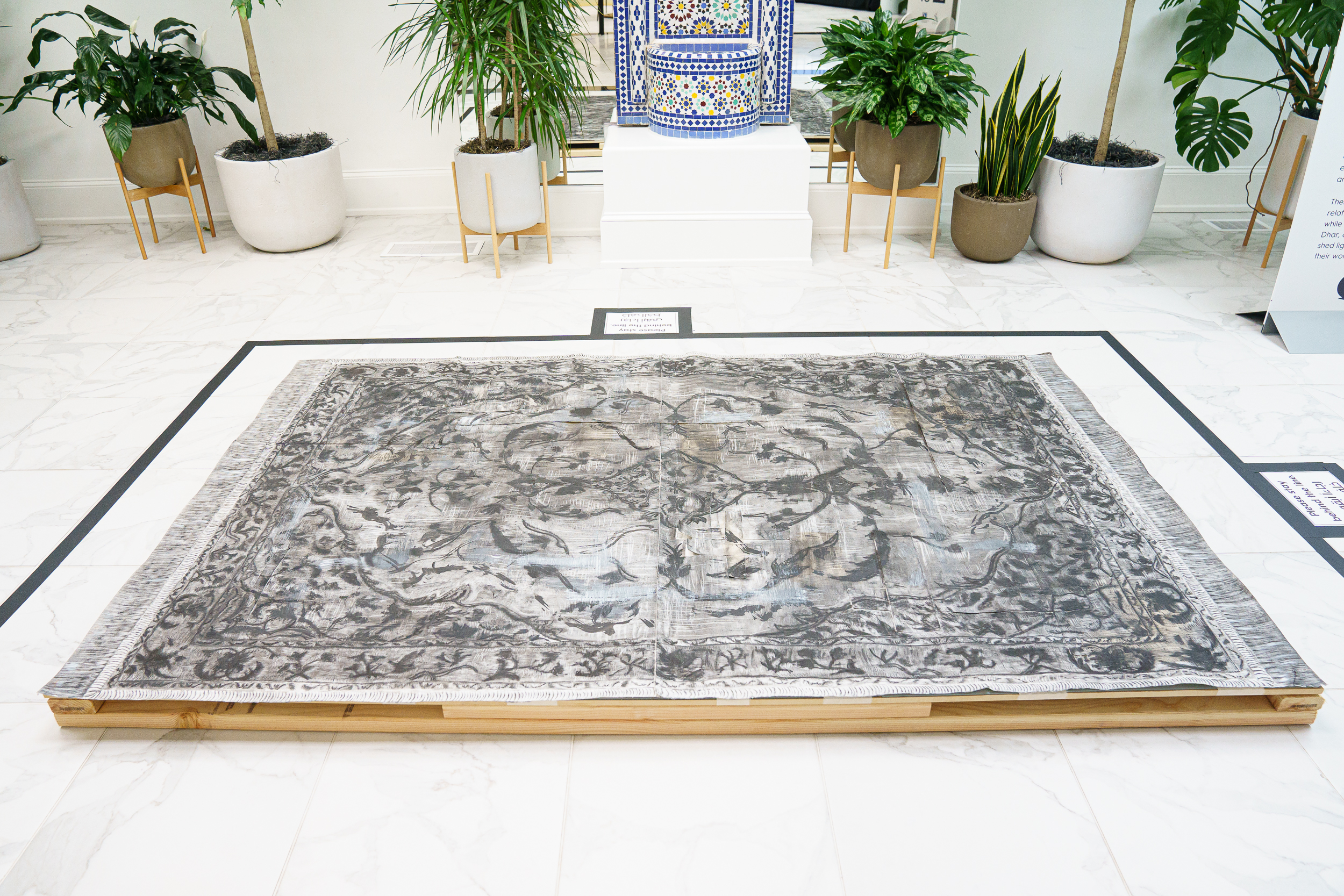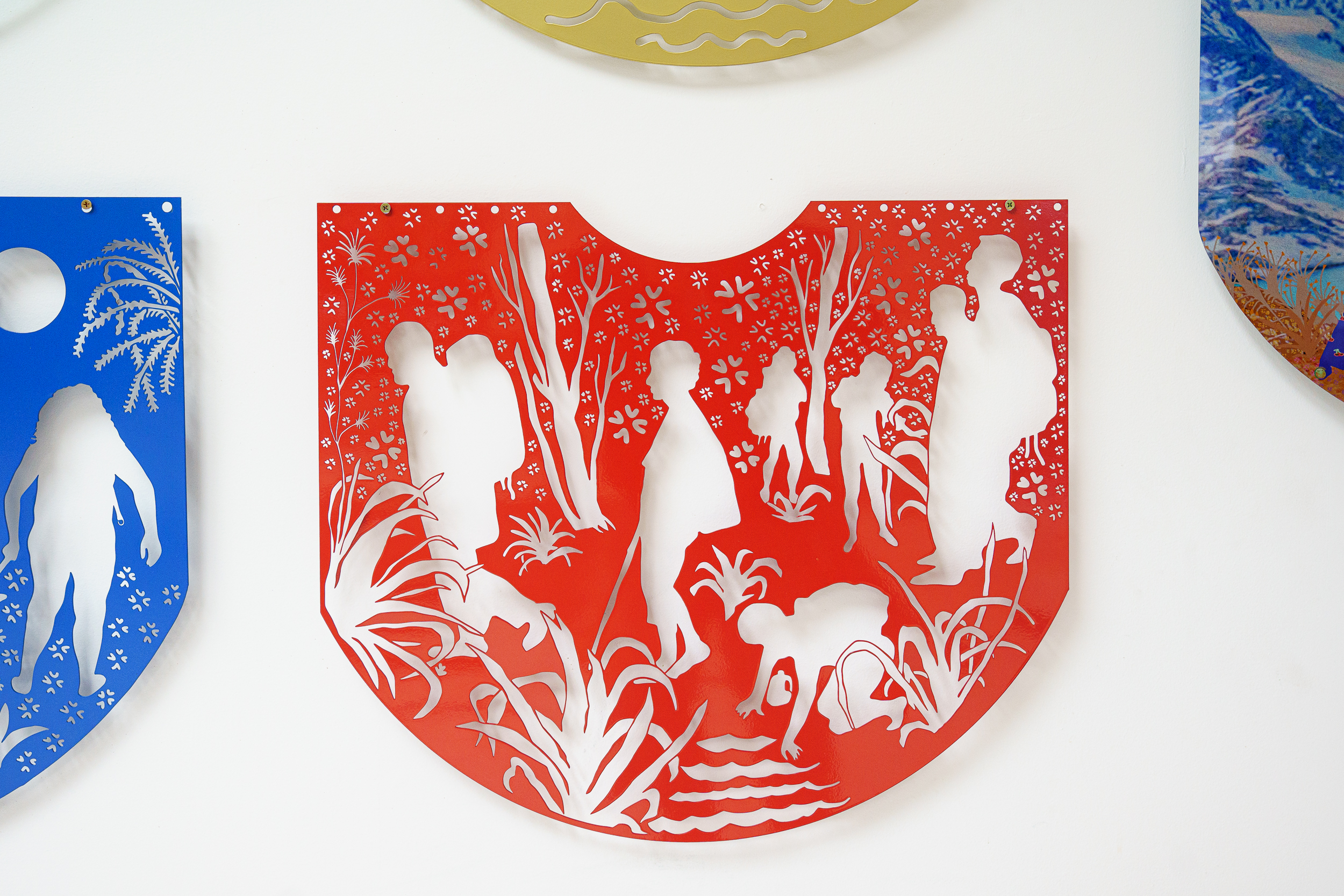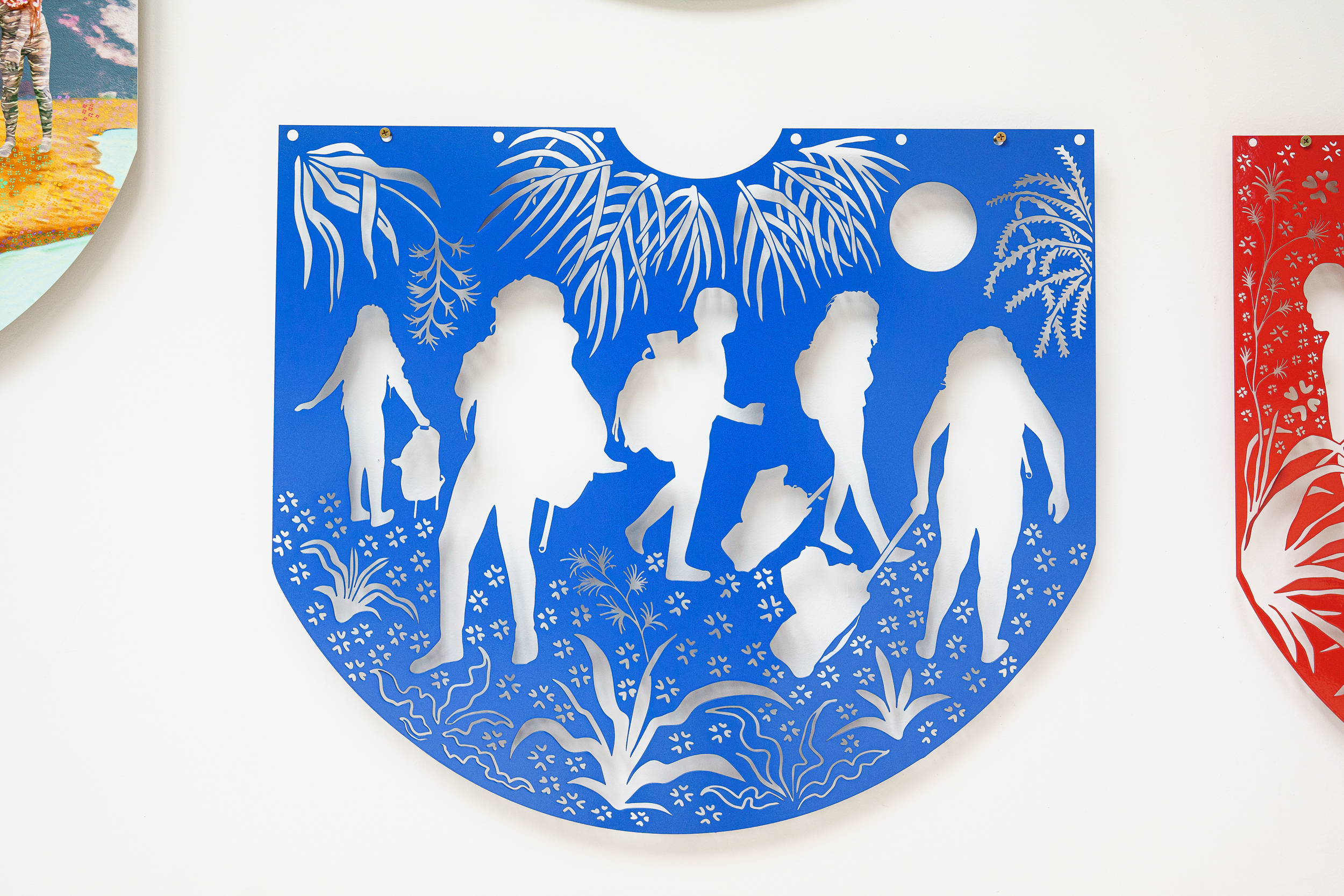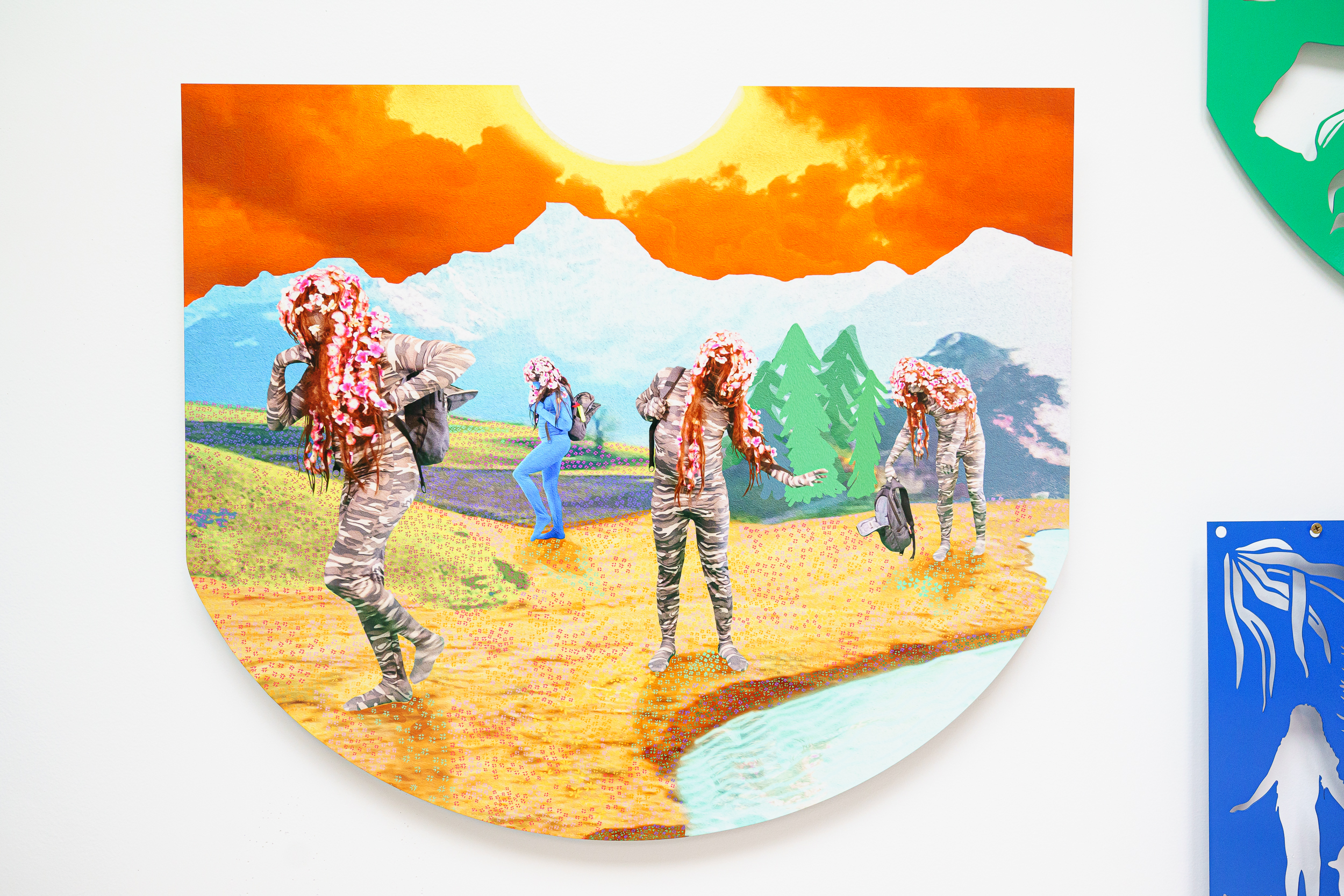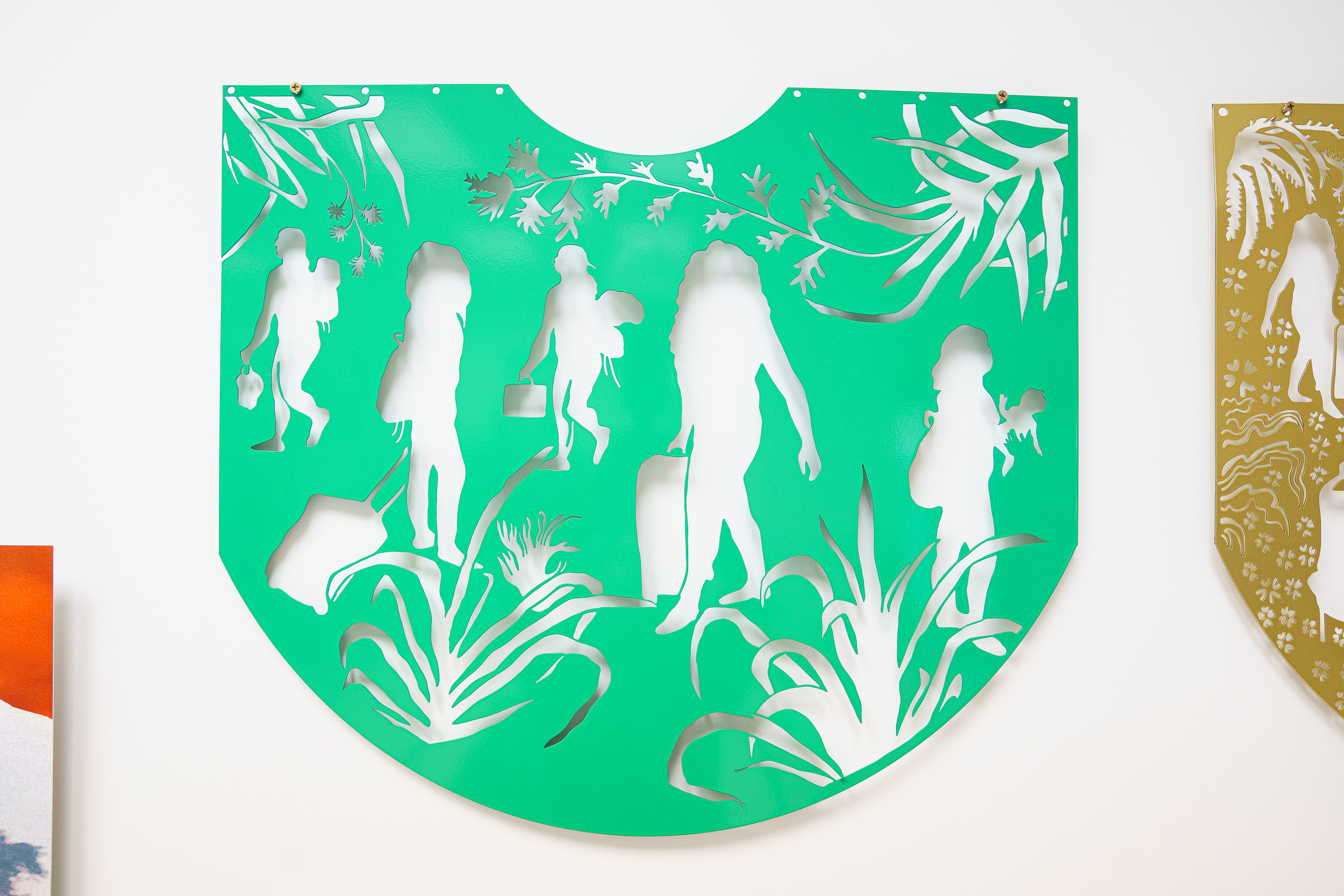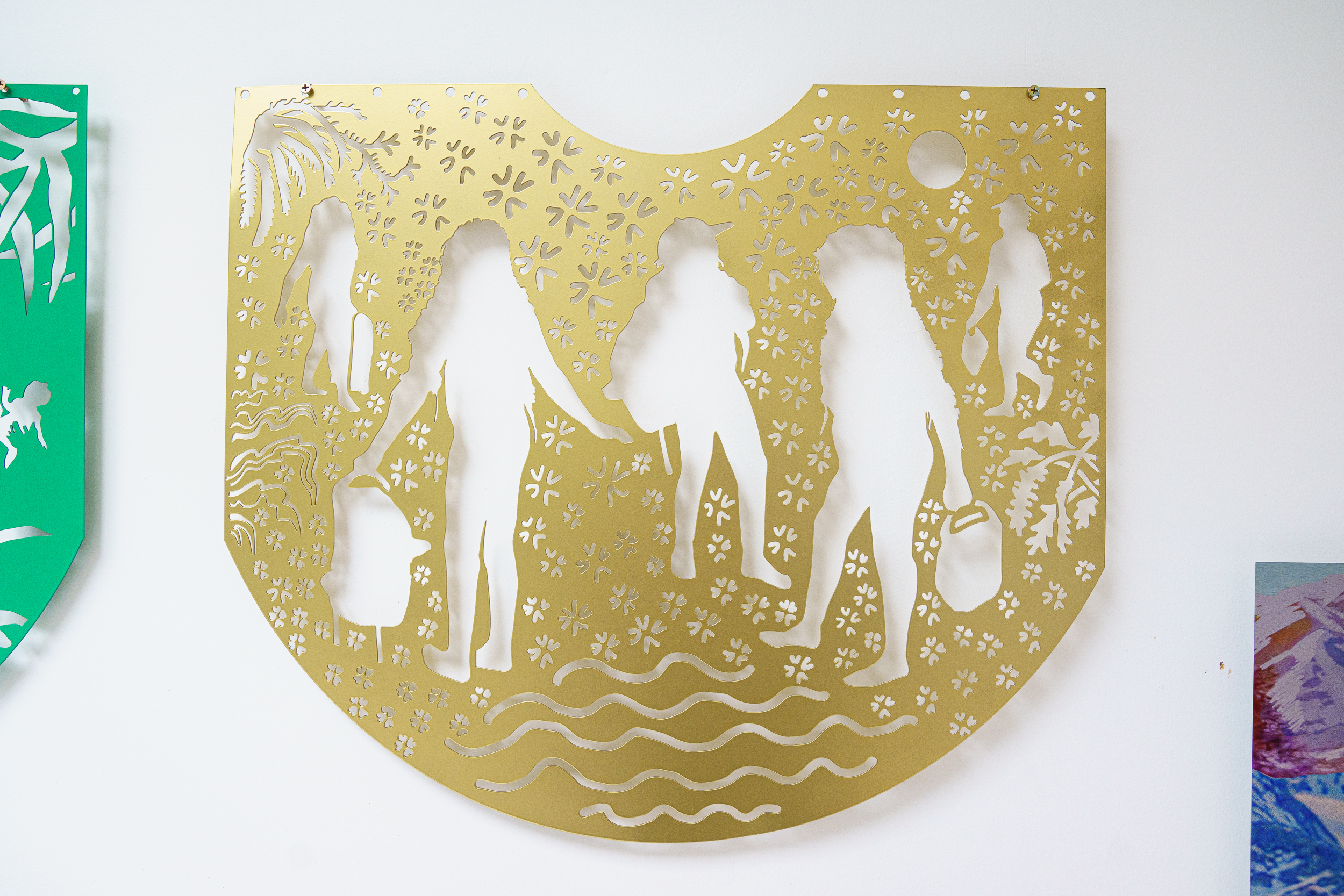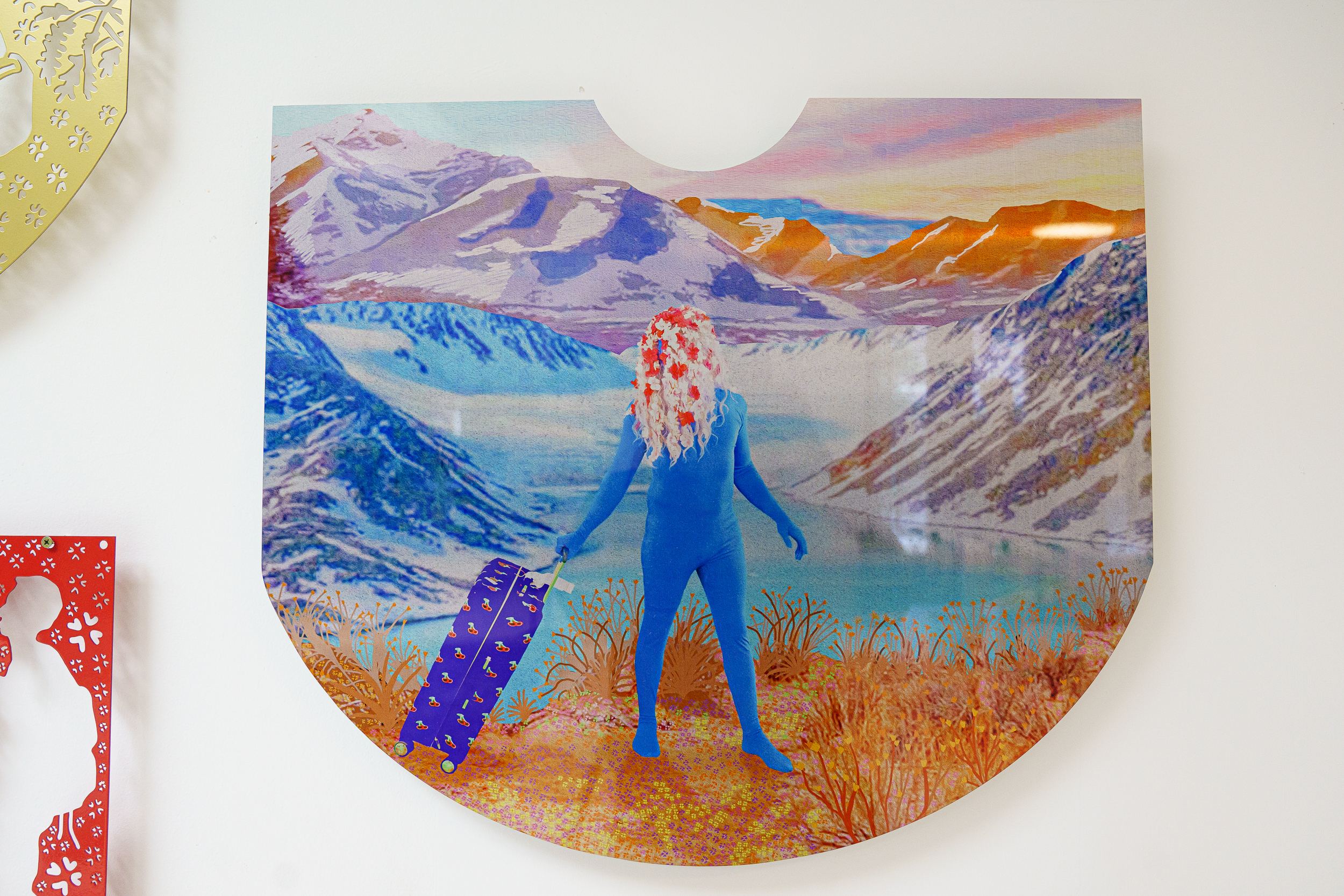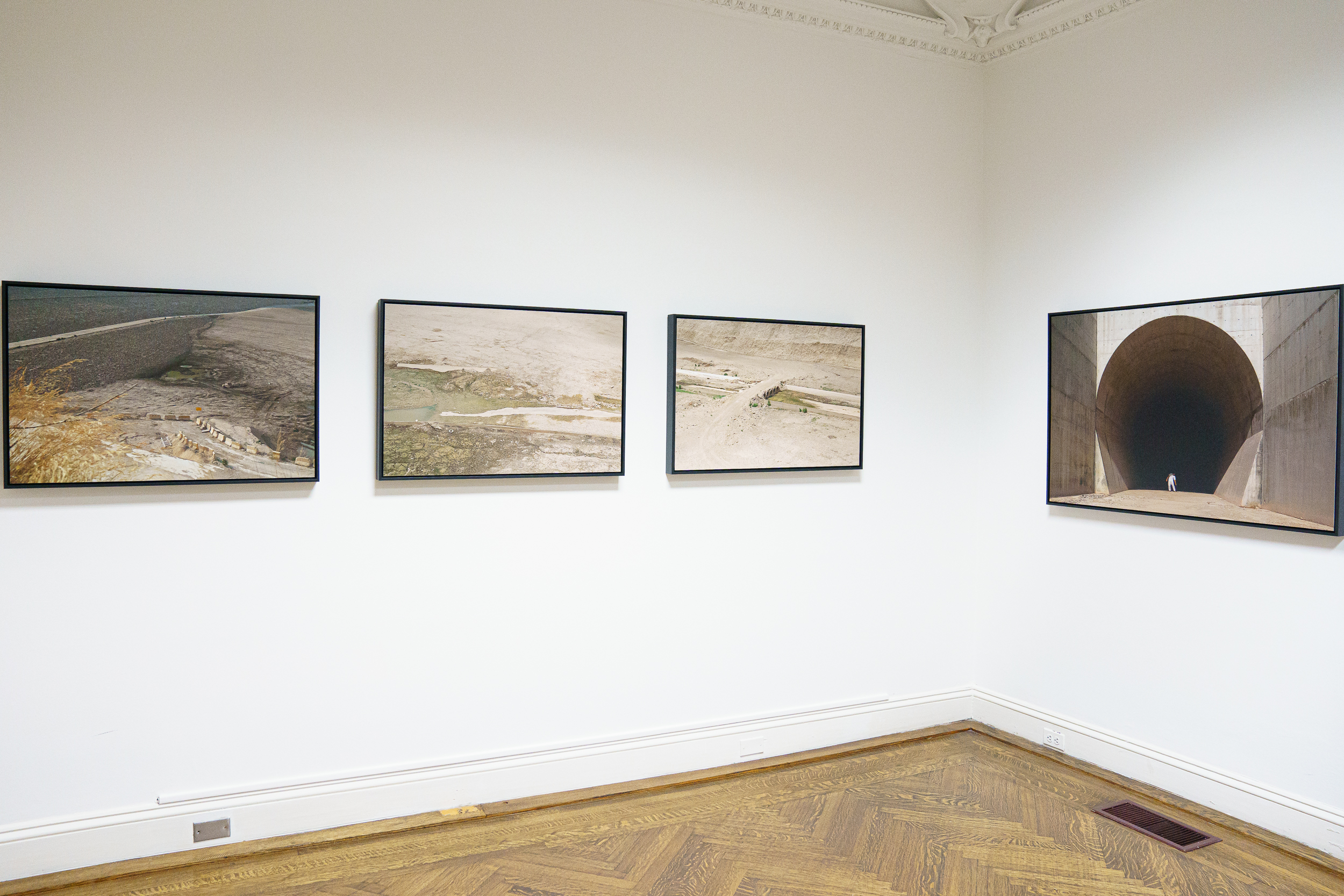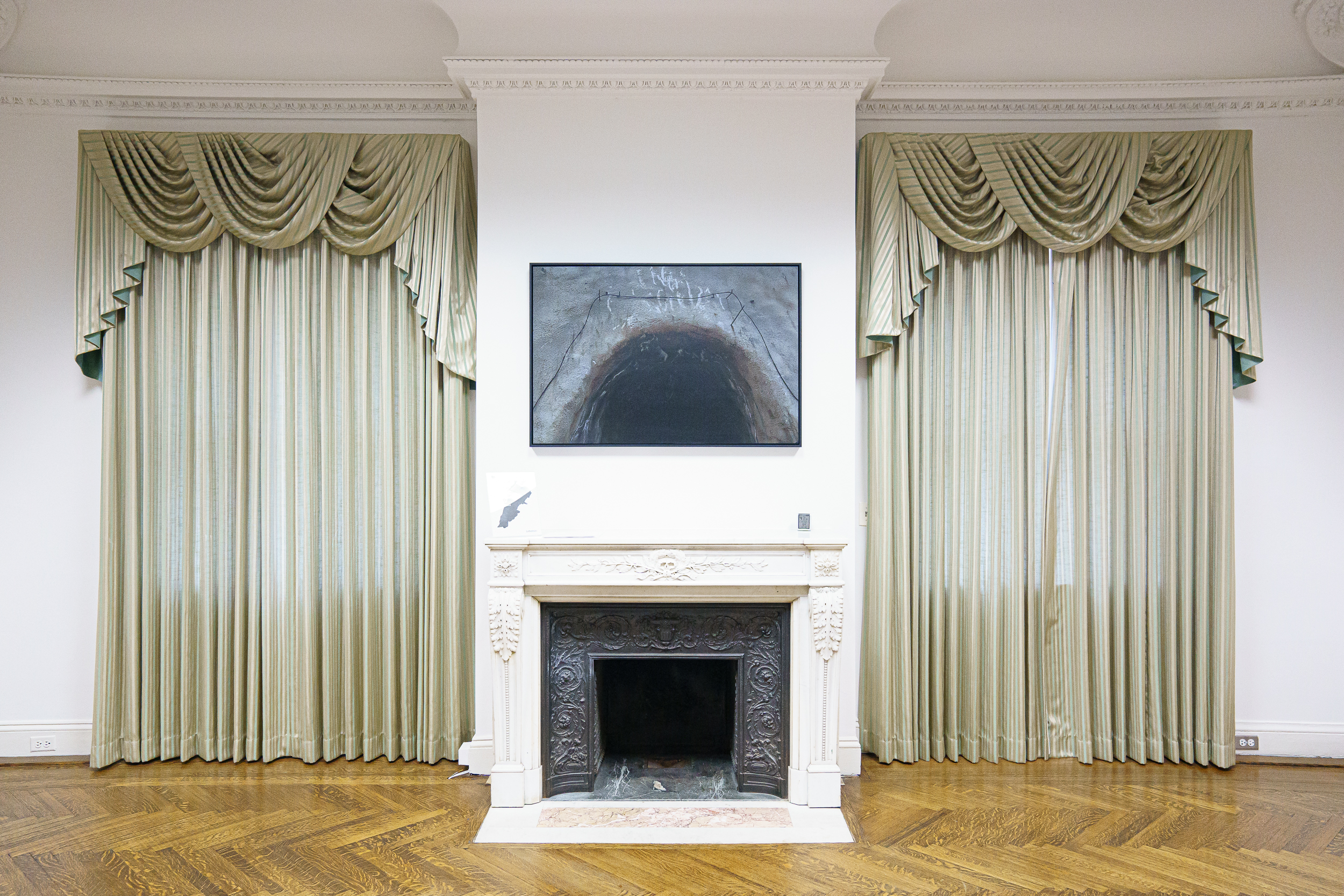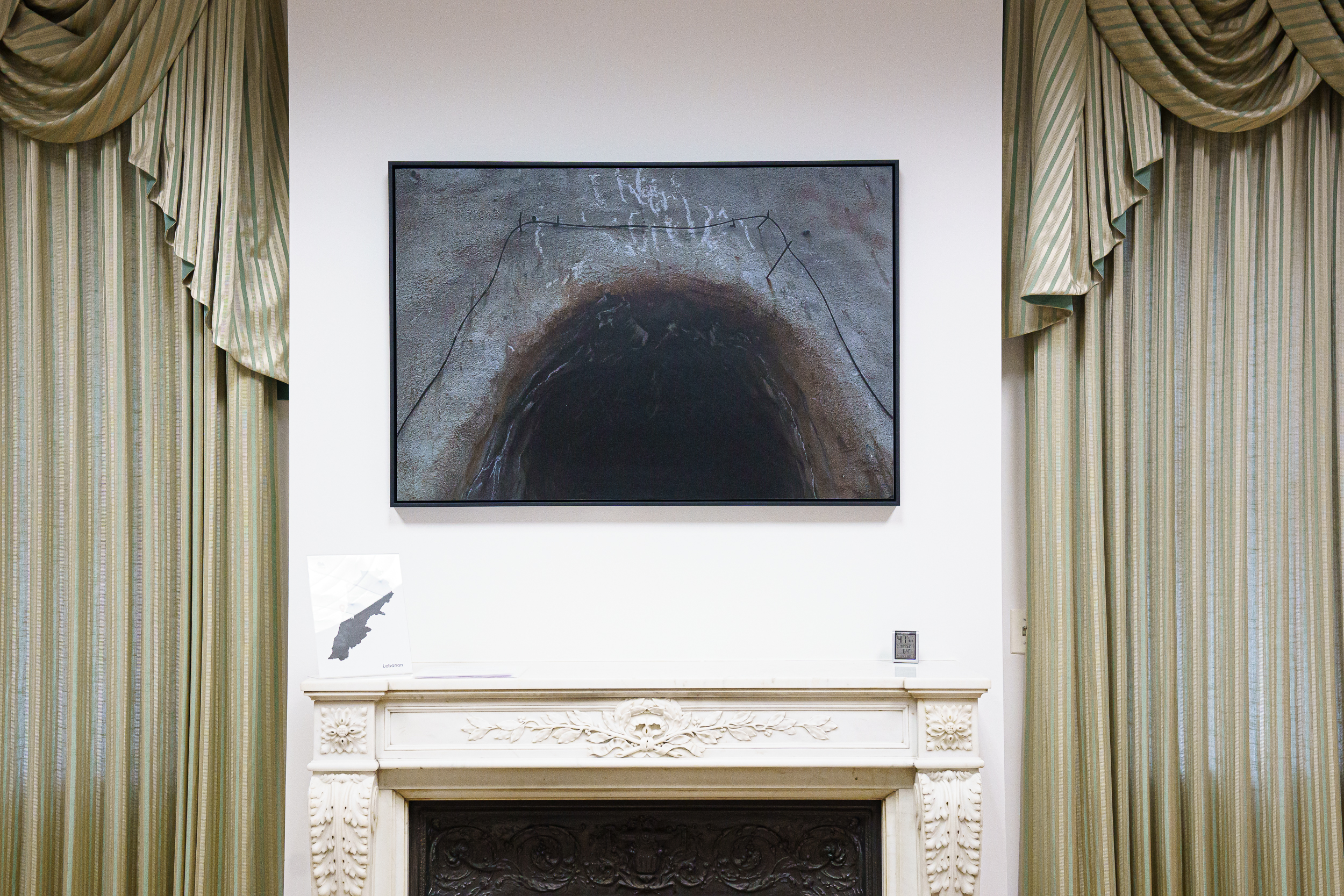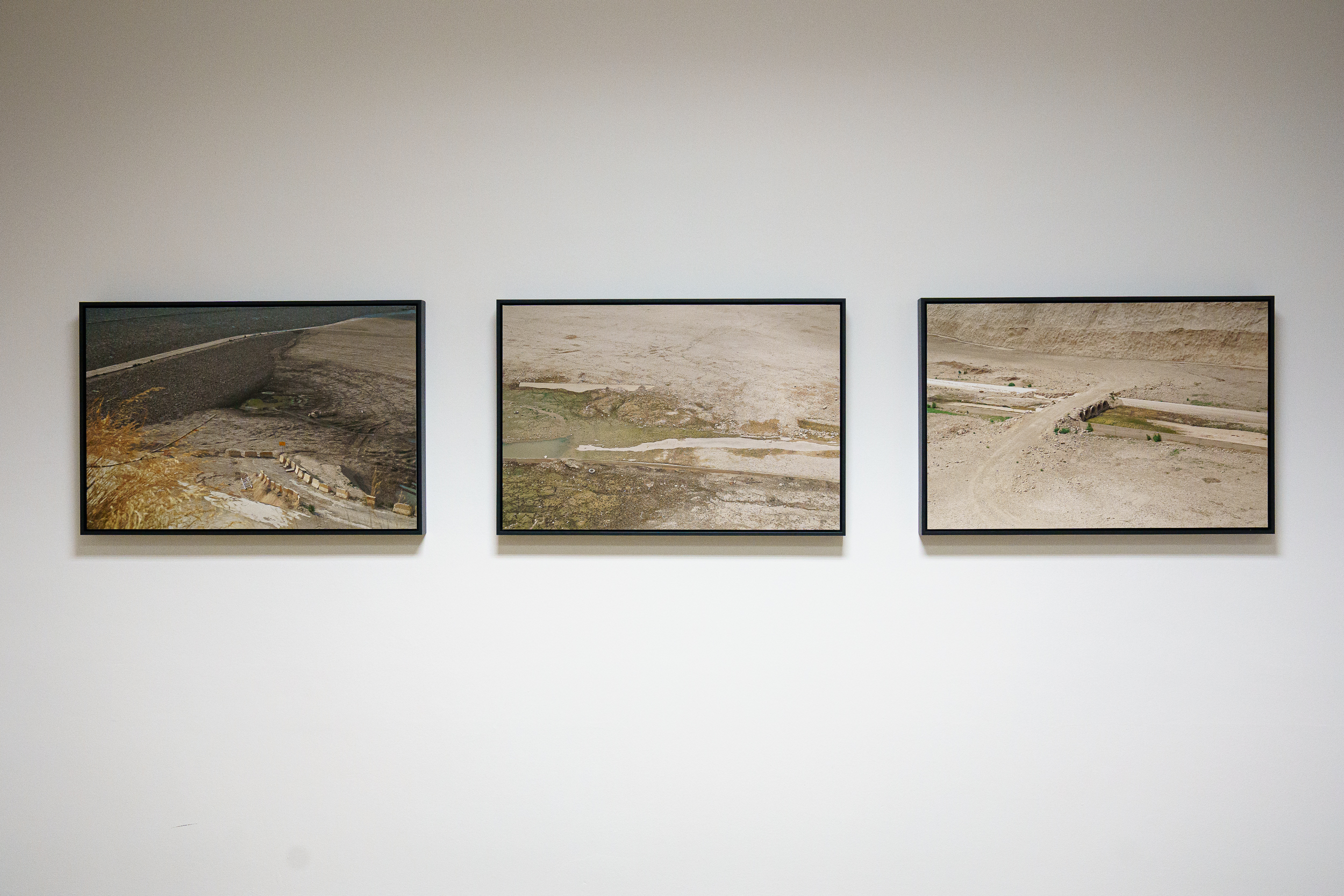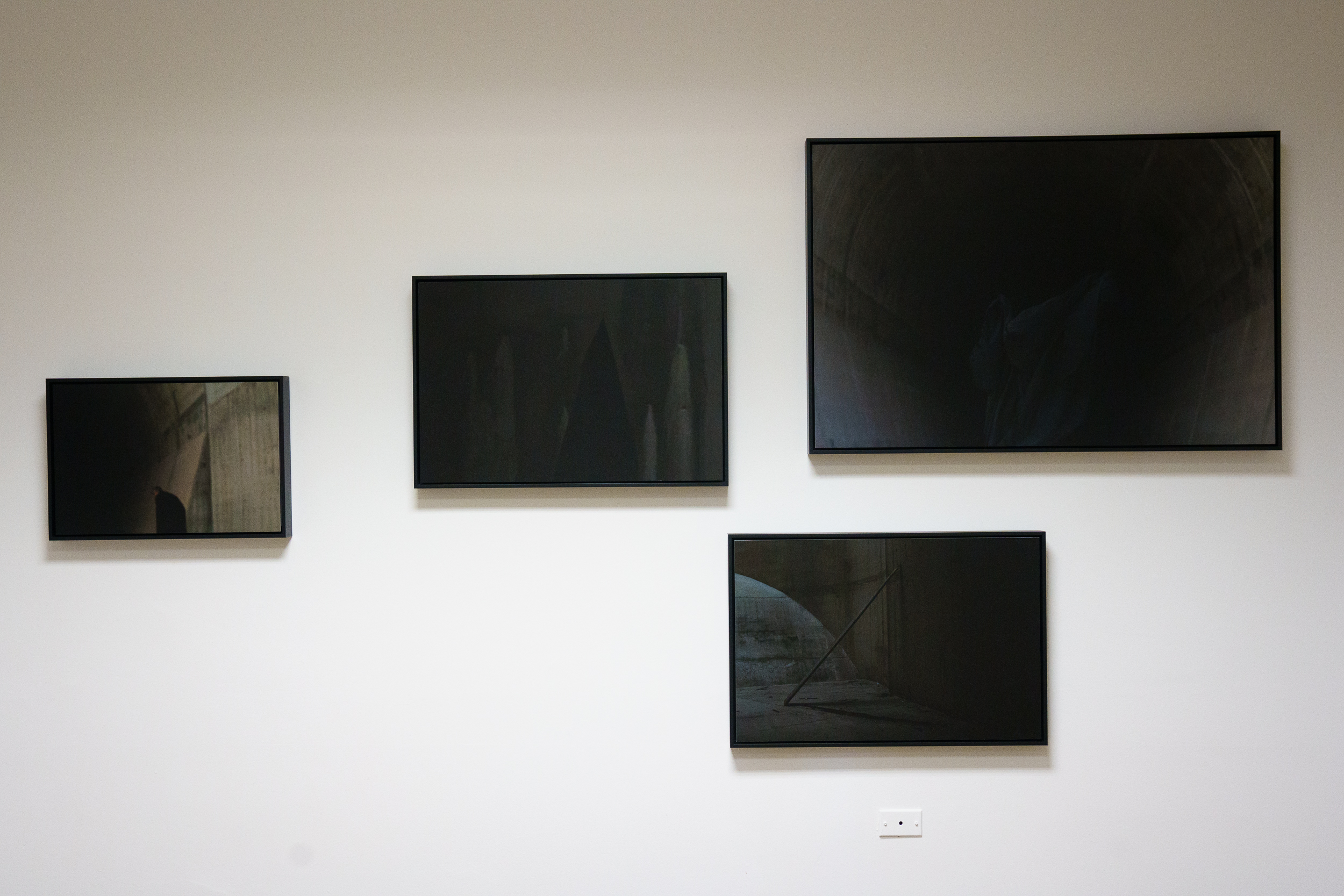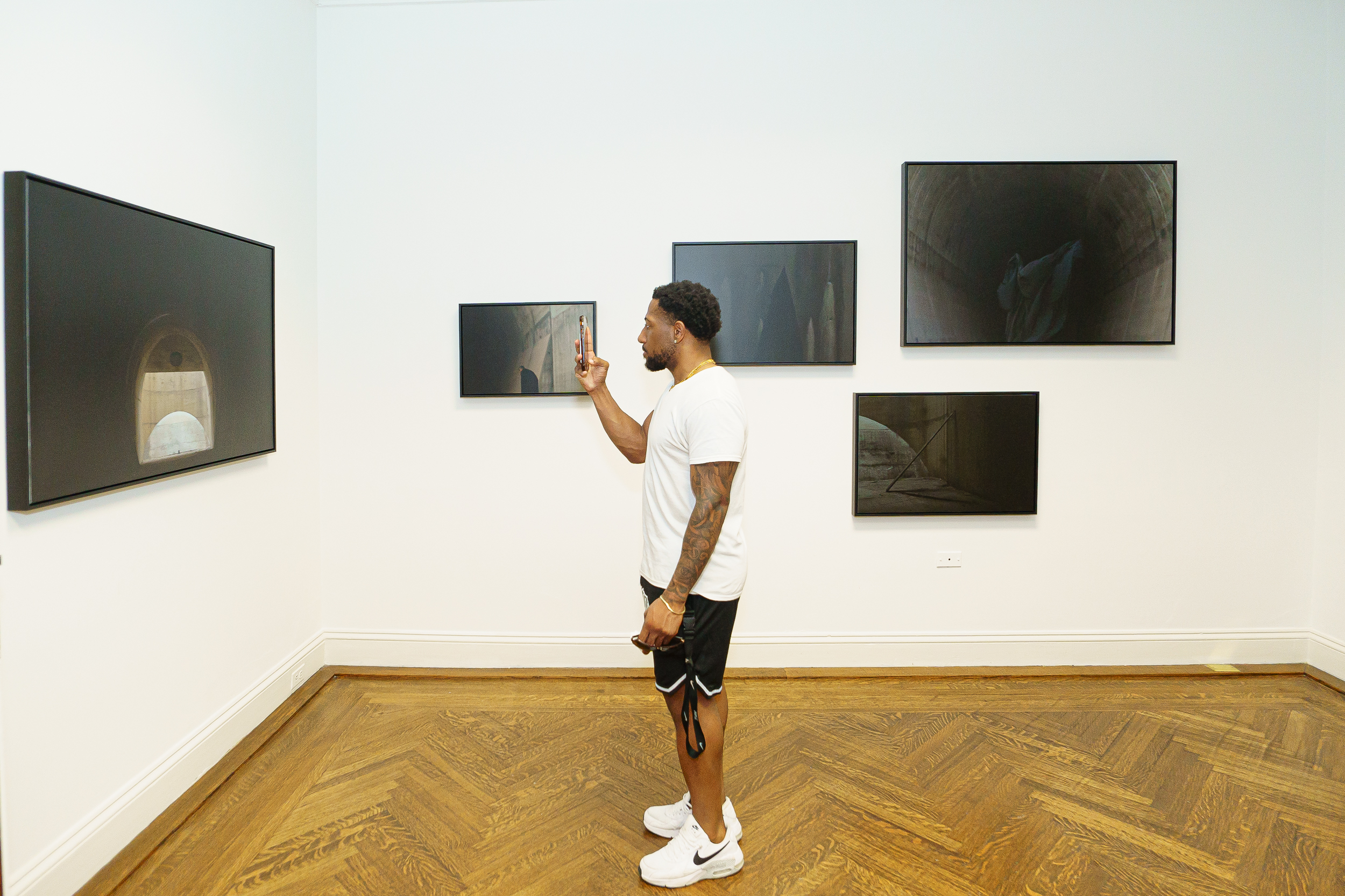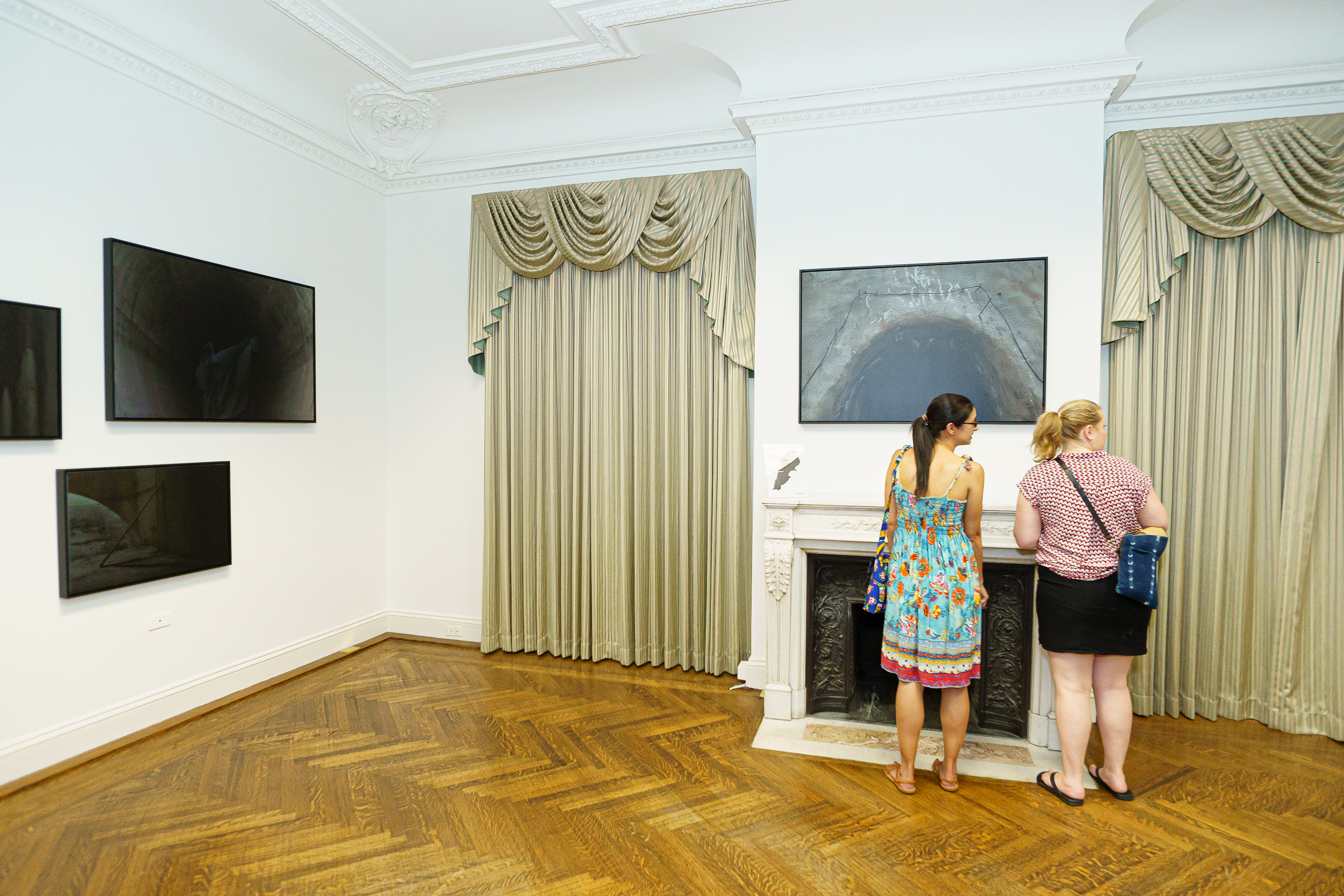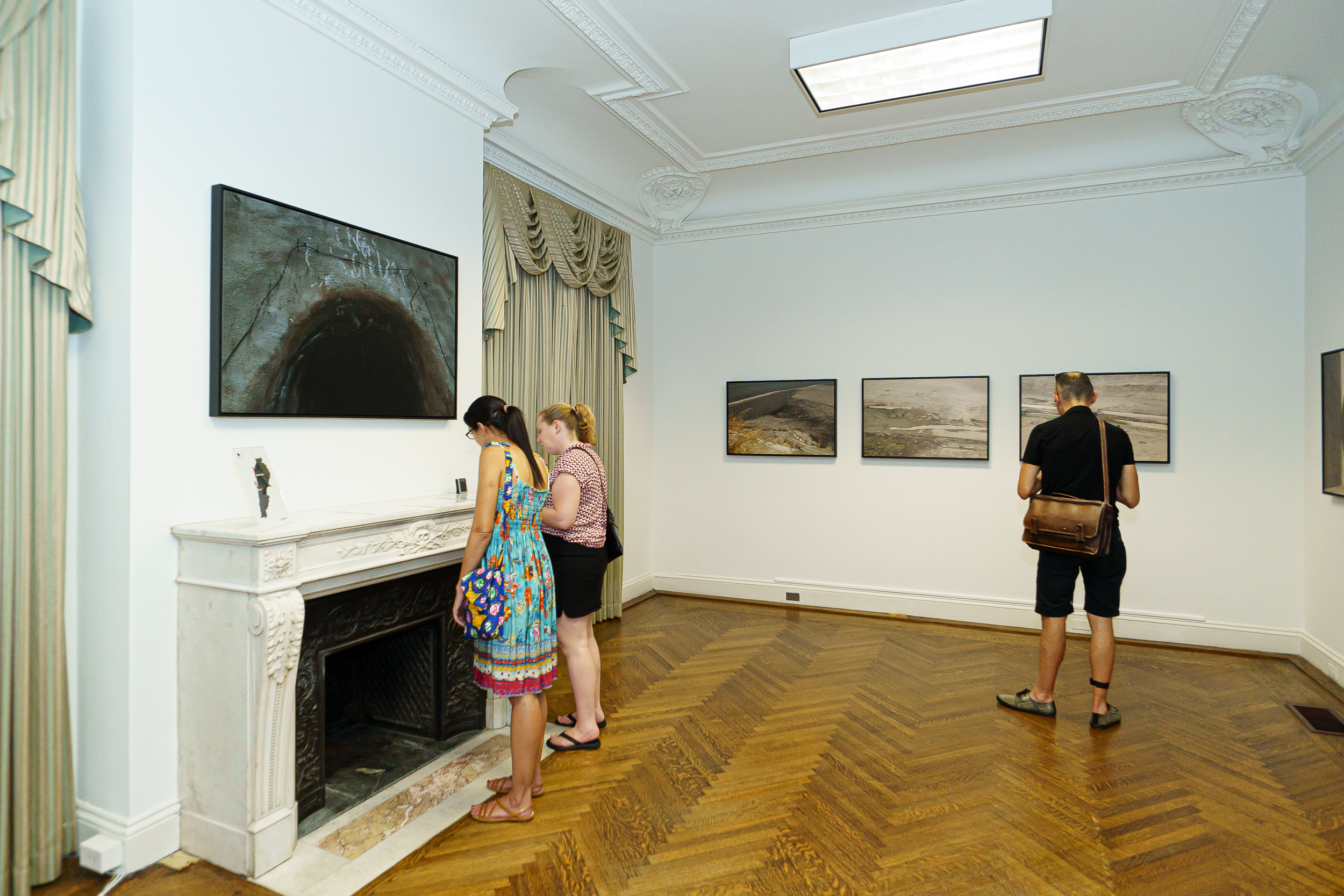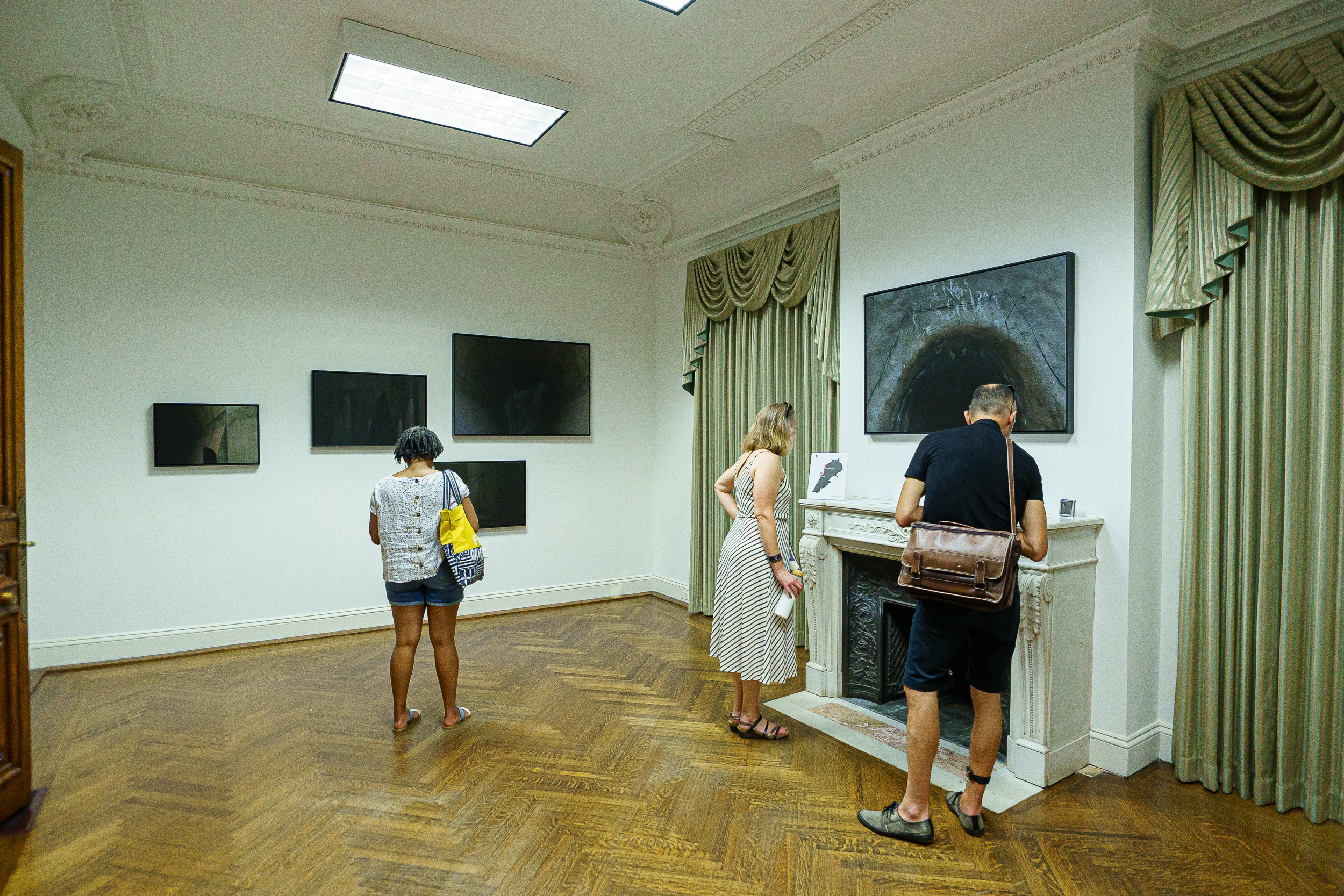About the Exhibition
The 2022 IMPART Artists Grant Exhibition features new work by the three selected winners of the annual grant program. Connecting creatives and artist empowerment are central tenets of QAIC’s philosophy. The IMPART Artist Grant program provides a cash prize to emerging and mid-career artists to support the creation of a new body of work.
The exhibition features work by interdisciplinary Hoesy Corona, designer Nura Dhar and photographer Roger Mokbel. Corona, Dhar and Mokbel each responded to the open call for work that explores the intersection between sustainability and the arts. Through different mediums, including drawing, photography, and mixed-media installation, the artists address issues such as climate migration, human interventions in the natural environment, and the relationship between tradition and labor.
Their work reflects the places each artist has a relationship with, Kashmir, Lebanon, and Mexico while addressing current global challenges. The artists illustrate the diverse ways artists shed light on and document such challenges through their work.
Artists on Display

Hoesy Corona
Corona is a Queer Latinx artist creating uncategorized and multidisciplinary art, spanning installation, performance and sculpture. He is a current Winston Tabb Special Collections Research Center Public Humanities Fellow 2022-2023 at the Johns Hopkins University’s Sheridan Libraries. Hoesy has exhibited widely in galleries, museums, and public spaces in the United States and internationally including recent solo exhibitions: Weathering (2022) at The Kreeger Museum presented by The Nicholson Project in DC; Sunset Moonlight (2021) at The Walters Art Museum in Baltimore, MD; and Alien Nation (2017) at The Hirshhorn Museum and Sculpture Garden presented by Transformer in DC. He is the recipient of numerous honors and awards including the Mellon Foundation’s MAP Fund Grant, the Andy Warhol Foundation’s Grit Fund Grant, and the Restoring Hope, Restoring Trust Artist in Residence at Wabash College. His work has been reviewed by The Washington Post, Bmore Art Magazine, and The American Scholar, among others.
Artist Statement
In my Climate Immigrants series, I highlight the complex relationships between humans and the environment by focusing on our changing climate and its impact on habitation and migration patterns across the world. Climate Immigrants is an ongoing site-specific installation and performance that considers the plight of climate-induced global migration and its effects on people of color. In it, the performers wear Climate Ponchos adorned with images depicting the archetype of the traveler. The series expands upon issues of immigration by creating a framework that implicates everyone and not just a select group, addressing one of the most pressing topics of our time: climate-triggered immigration in relation to US-centric xenophobia. The hybrid work on view adds a new dimension to the anonymous silhouettes with staged performances for the camera, overlaid with digitally woven and printed collages on cotton and metal. These new works for the wall draw from my painterly background in creating fabulated narratives that obfuscate figures on journeys to destinations unknown—inviting the audience to play witness to anonymous environmentally displaced people thrusting forward in search of a better life in the face of the global climatic reshuffle.
Installation Shots

Nura Dhar
Dhar is a multimedia artist and fashion designer whose work explores abstraction and reinterprets traditional craftsmanship and Islamic art. She is a current undergraduate student in the Brown University and the Rhode Island School of Design Dual Degree Program studying Apparel Design and History.
She has collaborated with artisans in the Jayshree Kanwat embroidery studio in Jaipur, India, interned at the National Gallery of Asian Art, and the New York City-based womenswear brand Proenza Schouler.
Artist Statement
This work is a meditation on the process of creating.
During my first visit to my grandparents’ hometown, Srinagar, Kashmir, one of the first places I was brought to was a weaving mill. Through the experience of watching traditional Kashmiri textiles be created, from spinning to dyeing to weaving, I witnessed the intimate relationship between the material and the maker, the master and student, and nature and man that is ever-present while creating, transforming an object into an heirloom. Traditional craftsmanship is more than an antiquated method of production. In our era of mass-produced “perfection,” the humanity within creating has been removed. Traditional craftsmanship is the ultimate form of sustainability, through the complex and detailed process of production that stems from nature to the network of artisans whose families pass down the knowledge of their trade through the generations.
The piece aimed to mimic the repetitive, physical, and laborious experience of carpet weaving in the Islamic world, particularly referencing Safavid, Timurid, and Kashmiri carpets. “Carpet” is a reflection on traditional craftsmanship, the intimacy of creating, and the intangible value objects hold. Most important, “Carpet” is an imitation—bearing resemblance to the real object in formal qualities and motifs only, as the medium is charcoal and ink instead of textile. The artists Anni Albers, Agnes Martin, and Jay DeFeo whose work explores representation, abstraction, and materiality served as significant sources of inspiration while I was working on the final piece.
Installation Shots

Roger Mokbel
Originally a biotechnology engineer, Mokbel established himself as a self-taught Lebanese photographer by using his visual works as a plea for social justice.
His work explores the intersection between the personal and the collective. Always socially engaged, he is fascinated in studying the multiple layers through which a topic can be approached. In his storytelling projects, he has often used human psychology as a point of entry to address societal and environmental concerns.
His first project, Describe the Sky to Me, was selected by the Arab Documentary Photography Program in 2018 and received the Photography Prize from the Boghossian Foundation in 2019. His second project, And Then, They Just Left, was exhibited at the Festival International des Arts de Bordeaux in 2021 and in Madrid as part of the official selection of PhotoEspaña 2022.
He is a member of Collectif 1200, a collective of Lebanese photographers and visual artists.
Artist Statement
Dust in My Mouth
On the day when we were remembering the one year of the passing away of my father, I was in the dry Msaylha dam – Lebanon, lying on the ground, grieving the loss of my father. Everything around me was grieving its own loss too. Thousands of trees were cut down in that same spot. The promised water never came, nor did the grieving tears.
Through this series of photos, you are invited to reconnect with the environment through shared emotions with the landscape. By equating the grief of a beloved person to the ecological grief, the works aim at reminding the viewer that humans and nature cannot be dissociated. It is indeed that segregation that has distanced us physically and emotionally from our environment and allowed for our way of living to become increasingly abusive and unstable.
Sustainability is also the urgency of action. By focusing on this topic, I hope to shed light on the controversy and the failures of these intrusive human interventions, calling on putting an immediate halt on the construction of the rest of the planned dams in Lebanon.
———-
Grief being a non-linear process, the artist chose to present Dust in My Mouth in a way that could be read from both ends of the exhibition. The work contemplates the affected landscape and the artist’s own grief experience using the tunnel as a transitional space between these dimensions.
Installation Images
Installation Shots

